Excommunivacation, part six.
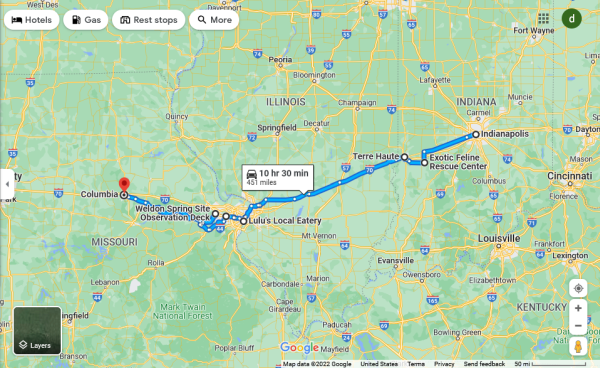
451 miles.
DAY TWENTY-FOUR
Monday, September 9th
Driving through Indiana on our way to St. Louis, we stopped in an area strangely called Brazil and saw this big, 24-foot, 800-pound, polished, anatomically correct statue of a great dane named Champ. It didn't register with me until afterwards that I'd been seeing that Great Dane logo on semi-trucks for years. This was one of their trailer plants, it turned out.
Somehow, not far from there in the middle of rural corn country, Indiana, there was a sanctuary for rescued big cats! It was called the Exotic Feline Rescue Center and they held hourly tours seven days a week from 10-5 for only $10. It was a rare opportunity to see these big animals most people paid to see at cruel, exploitative zoos, circuses, and sketchy roadside attractions, so we made time to stop by after I scoured their website to make sure we were going to a legitimate sanctuary. Their FAQ was clear that they did not buy, sell, or breed any of their animals, that no one could touch the animals, that they weren't a zoo, and that they spayed or neutered all of their residents. While they weren't certified by GFAS (Global Federation of Animal Sanctuaries), which I normally used when looking for places like these, I felt good about attending their tour. Later on the tour, I'd actually ask why they hadn't pursued it and was told they simply wanted to allocate all of their time, effort, and funds to the sanctuary and cats. It wasn't the first sanctuary to tell me cost was the only thing keeping them from getting certification. She'd also tell us the two things to always ask when trying to determine whether a place was a "true sanctuary":
1. Do they breed any animals?
2. Can you touch any animals?
We parked outside the gates on a long dirt road. When we walked up to the desk where some small merch was for sale to buy our tickets, we immediately noticed a young tiger pacing and excitedly looking outward from behind a fence. Their name was Drago and they were almost old enough to be relocated to their grown-up enclosure. They had been a resident for only half a year. They were too cute, and as all the big cats we'd see that day were, were almost alien in how big and unique they were. These were animals I'd only really ever seen on screens since I'd never been to a circus or zoo and had only ever seen some of their kind up close at Big Cat Rescue in Tampa almost three years before. Their beauty and magnificence were truly something to behold, and I understood the desire to seek opportunities to see them up-close. Of course, we were not entitled to other animals, and I'd never want to selfishly see animals at the expense of their comfort, safety, or life.
The hour-long tour took us around the forever homes of about 55 individuals. Our guide was really knowledgeable, not just about big and exotic cats in general and the problems they faced as human commodities, but about the individual stories, quirks, temperaments, and preferences of the different residents. It was endearing to hear her say something like, "This next one likes her privacy, so we're gonna keep going past them." Many of the cats were products of forced, for-profit breeding operations from exotic pet operations or roadside zoos, and some were rescued from defunct circuses, but the majority seemed to be removed or surrendered from homes who for reasons I'd never understand thought they wanted, and could adequately care for, a "pet" like a tiger, bobcat, or serval--something totally legal in almost half the country. They said they had to turn away animals every day because it was such a rampant problem that they lacked the resources to handle all on their own. Their habitats, each about an acre, were shrouded in trees and tall grass, equipped with structures to accommodate both the tree- and bush-dwellers of them, toys based on their preferences (which were very gradually discovered), and a big bathtub full of water they would bathe in (and apparently choose to simultaneously drink and defecate in, as well). Between 3,000-4,000 pounds of meat were fed to the cats every day, sourced for free mostly from local farms. We were told each cat had their own tastes with that, too, with some absolutely hating chicken and others suddenly deciding they specifically wanted to be hand-fed.
Their different personalities were on display and exhibited clearly upon the first introduction for most of them. Some ignored us, others desperately wanted our attention. One chuffed while rubbing their furry cheek against their fence. A serval named Simba hissed at me, and we stood as a retired circus lion named Zeus roared at us a few times. It was surreal to stand and listen to the actual sound of an old lion's triumphant call. Zoey the cougar had a permanently unenthused a ill expression. The bobcats were the most antisocial, though. A beautiful black leopard ("black panthers" weren't actually real) seemed particularly open to posing for pictures. In the end, they were all just really big house cats. I remembered something the tour guide at Big Cat Rescue said: "A cat is a cat is a cat." The tour was really good, and there was a sincere emphasis on ending the breeding of these animals for profit and entertainment. Our tour guide, who had a shoulder of leopard spots tattooed on her, just kept saying, "Once you know the truth, you can change." The small staff seemed to always be on the clock. When we finished, we watched Drago as he played with a ball. The EFRC was founded in 1991 on just 15 acres with three big cats, and now was the forever home to over 200 on 108 acres. They had working relationships with the USDA, the U.S. Fish and Wildlife Service, and the Department of Natural Resources, and were the first some states called about cats in need. It was always a shame to see animals meant to be wild and free behind bars and fencing, but I was glad these cats were getting some semblance of comfort and peace, given the opportunity to live out a natural life span.
After, we stopped by a gas station in Terre Haute to see a historical marker for where the original patented Coca-Cola bottle was invented, planted inconspicuously at a street corner by a convenience store. It was back in 1915 that the Root Glass Company won a national competition with their design.
We got into St. Louis in time for dinner and went straight to Lulu's Local Eatery, an all-vegan spot that was very plant-oriented with an especially dedicated, stringent commitment to sustainability. We obviously got a big bowl of their buffalo cauliflower bites to share, and I got the Thai Crunch Wrap, which was full of shredded kale, organic marinated tofu, shredded carrot, red cabbage, cucumber, green onion, red pepper, radish, crushed peanuts, mint, basil, and house-made Thai peanut dressing. For a place without any fake meats, it was some of the most flavorful and filling food either of us had eaten. We walked a few blocks down the road to a queer-owned and operated cafe called MoKaBe's and loitered there until they closed at 11. It was very big, with two floors and plenty of seating welcoming to people like us just looking for somewhere to sit and soak up some AC and power outlets. By closing, I got a walnut espresso brownie and their special "Punch a Nazi" drink, which tasted like a liquefied blueberry muffin. Then it was to an oppressively hot and humid Walmart parking lot a half hour away where we'd experience the worst sleep of the entire trip. For some reason, St. Louis would wind up being the hottest fucking city.
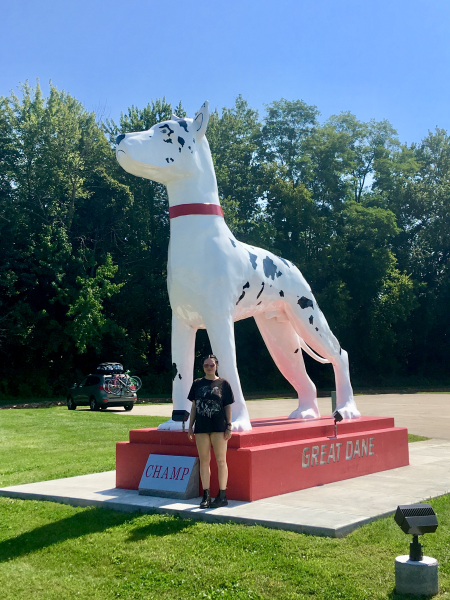
Champ (Alyssa for scale).
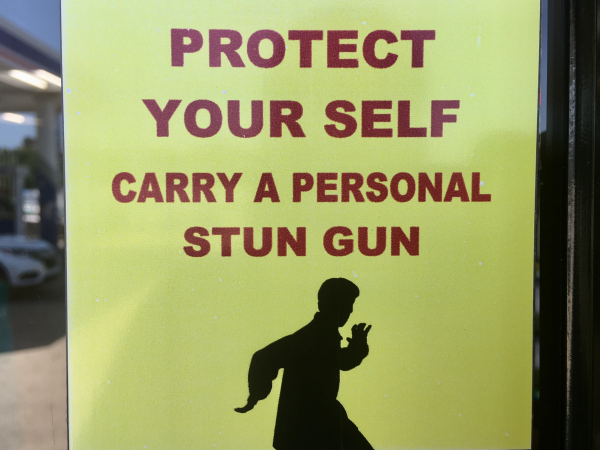
Wise advice from a gas station in the middle of nowhere.
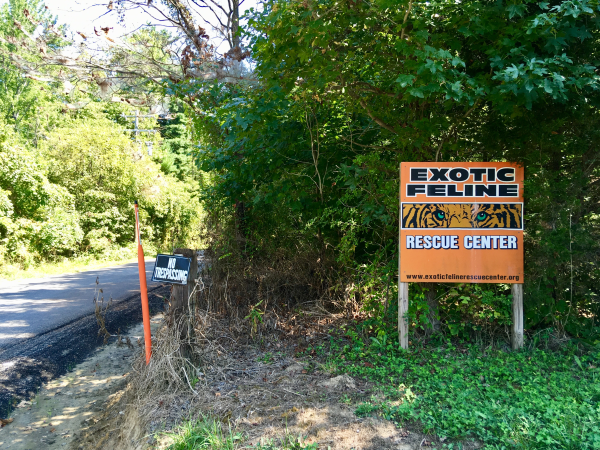
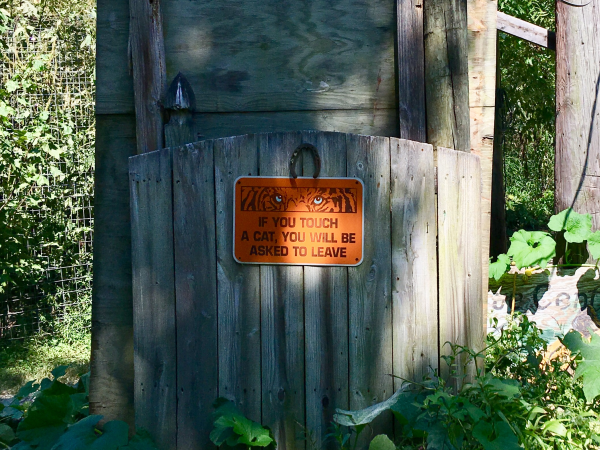
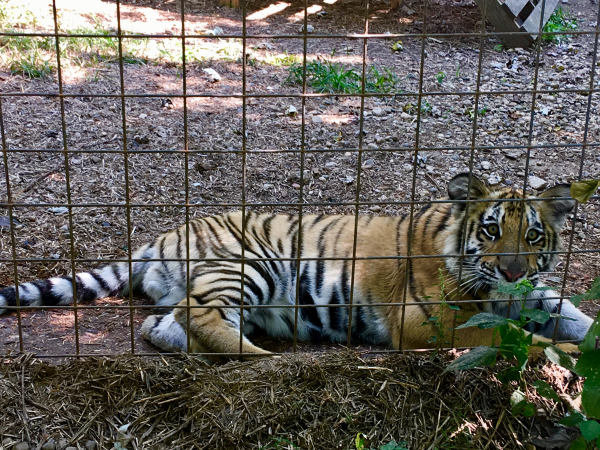
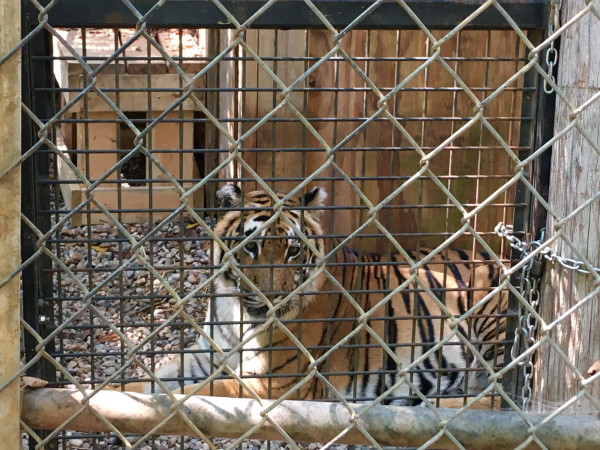
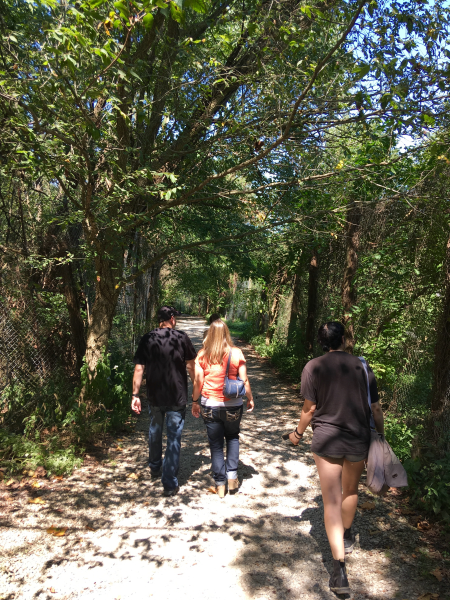

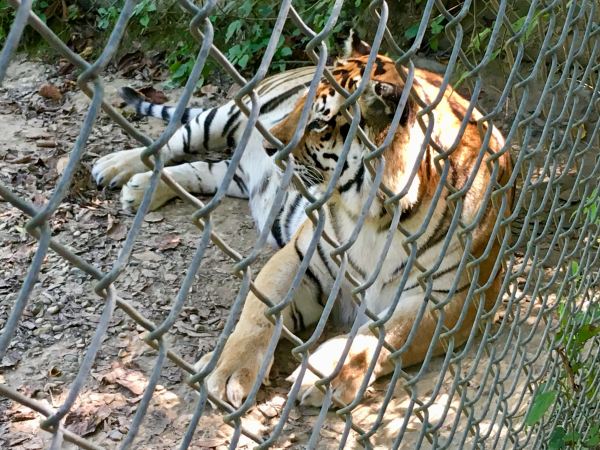

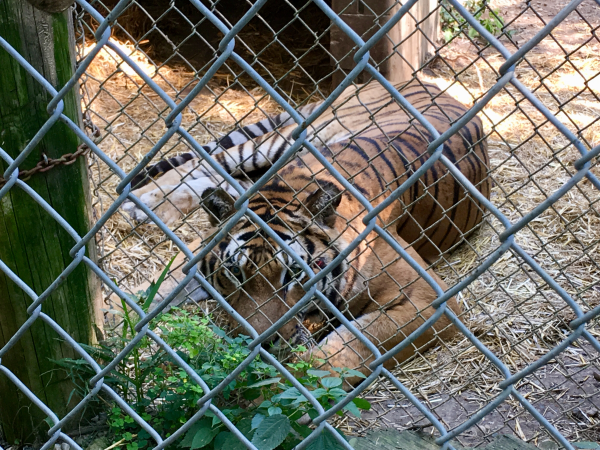
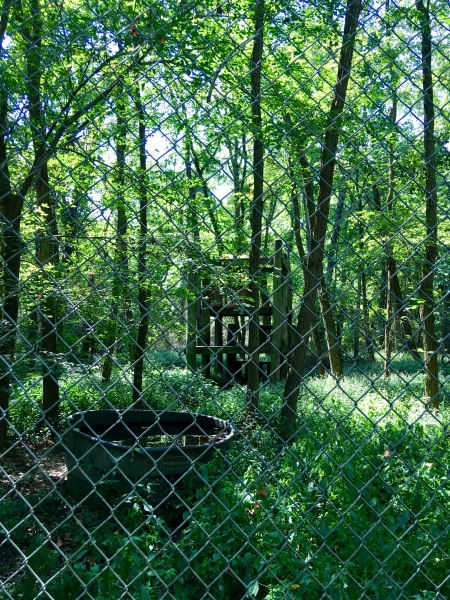
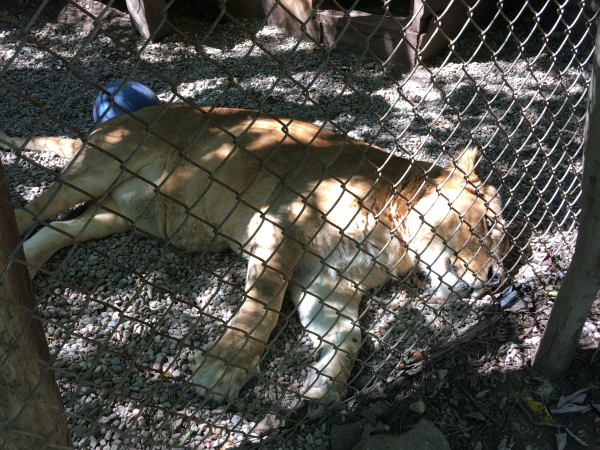
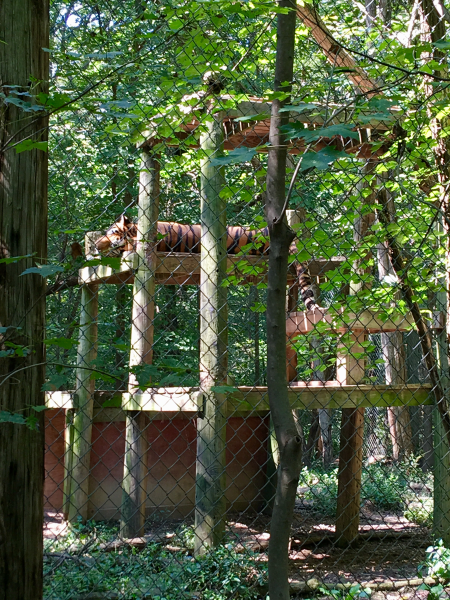
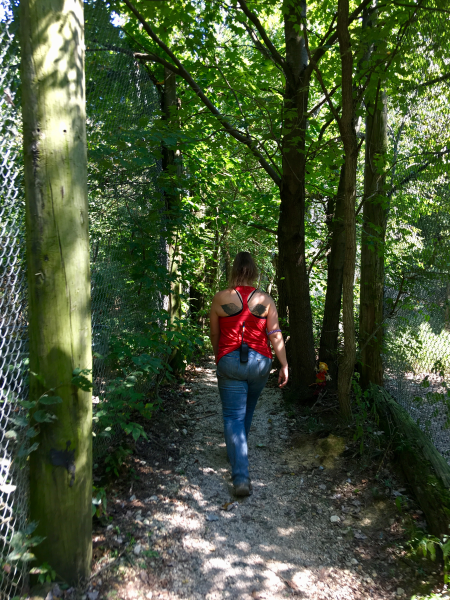

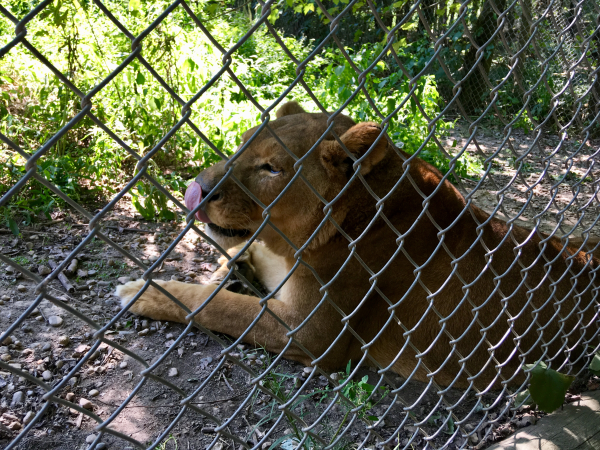
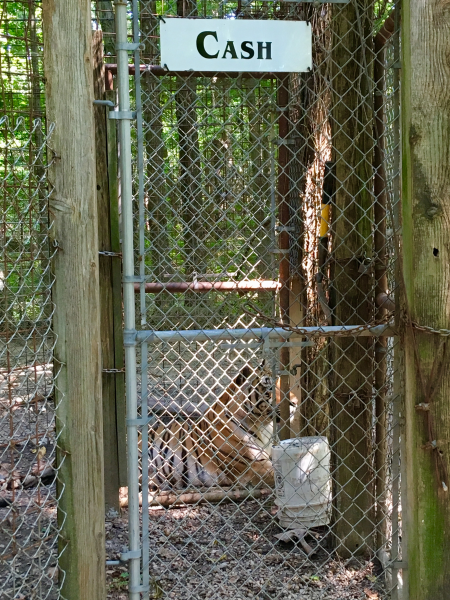
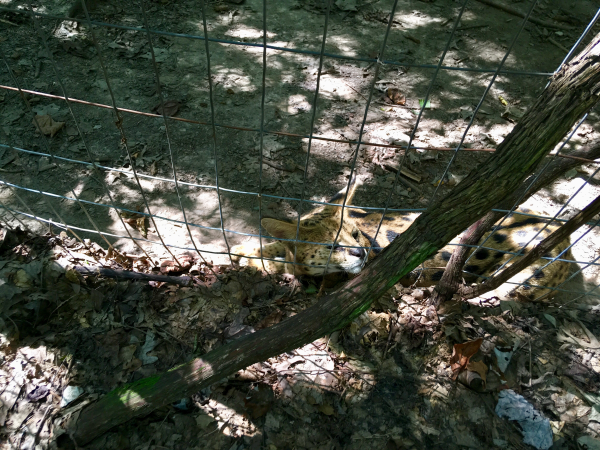
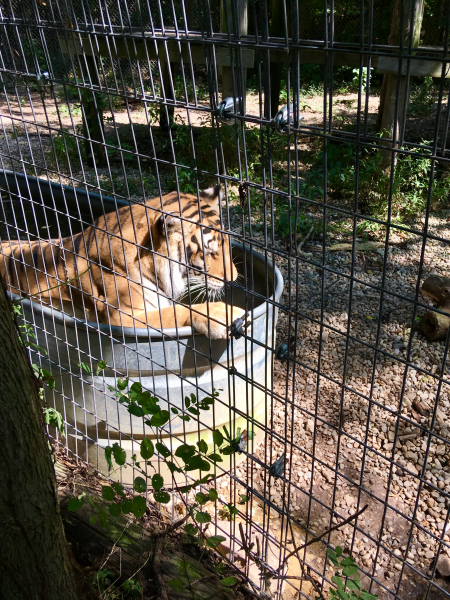

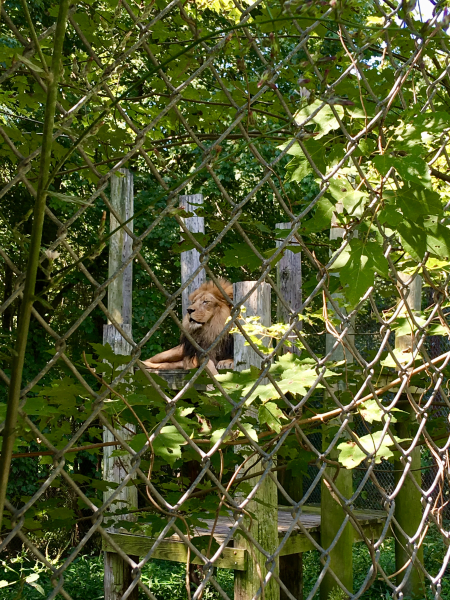
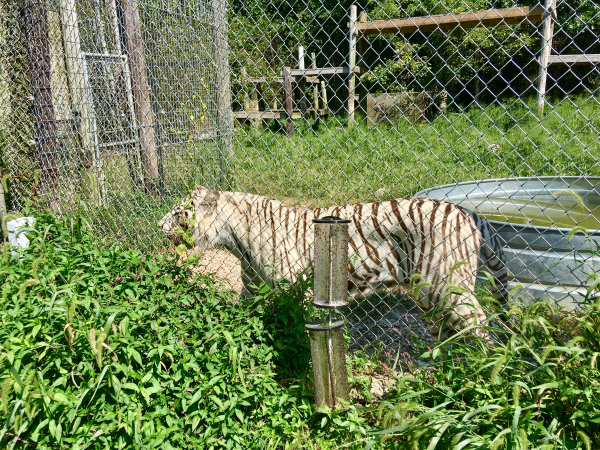
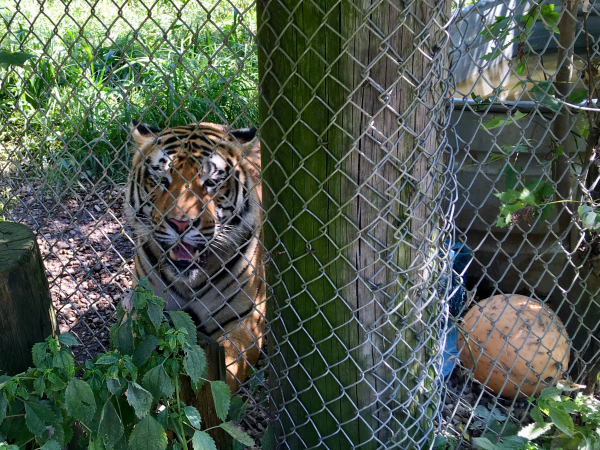

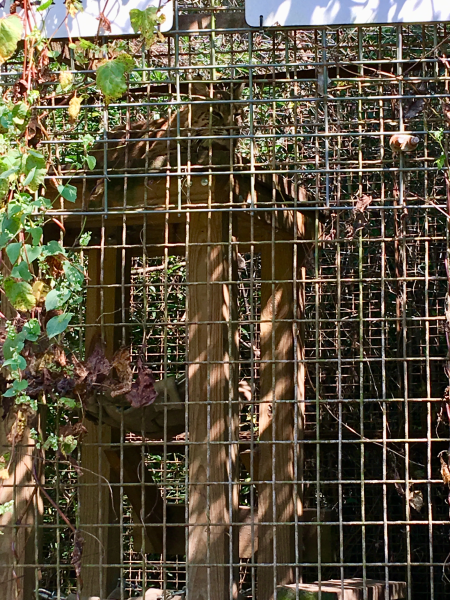
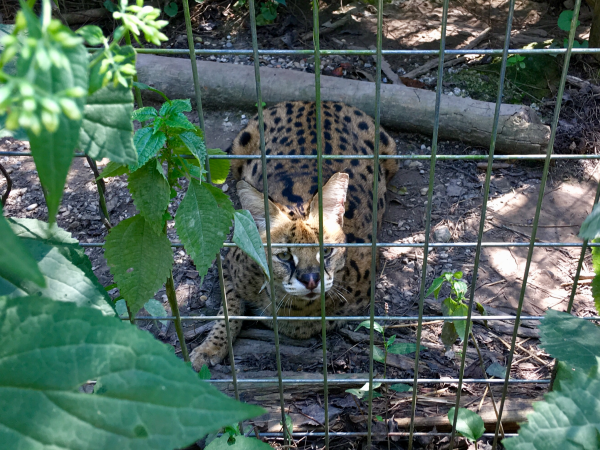
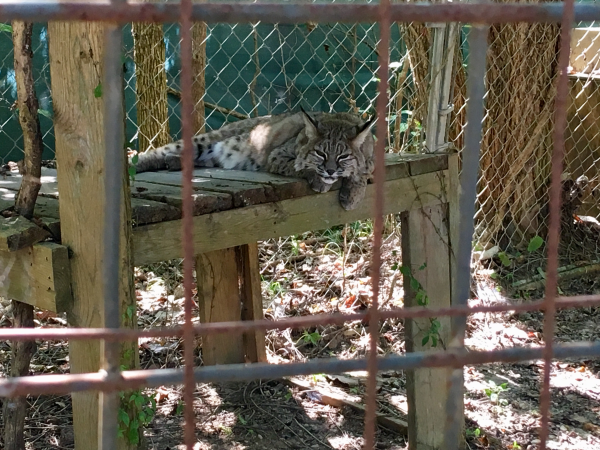
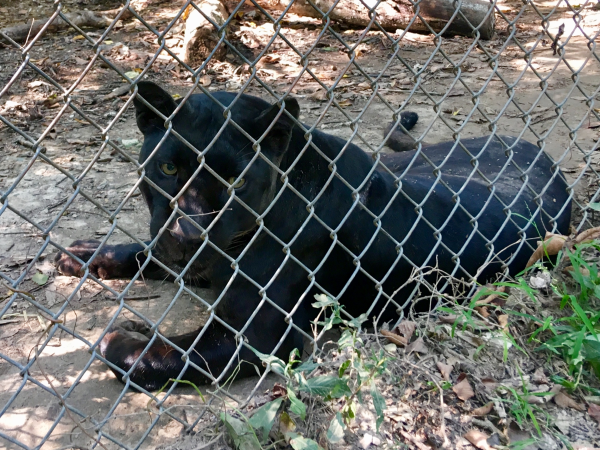
The Exotic Feline Rescue Center!
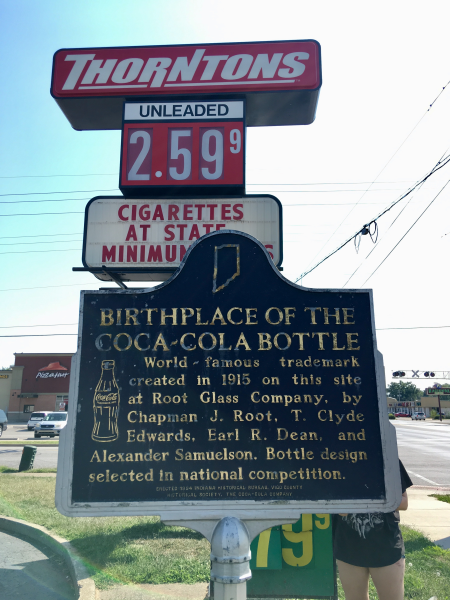
To be clear, not the birthplace of Coca-Cola itself, just the shape of the glass bottle.

Veganism is everywhere!

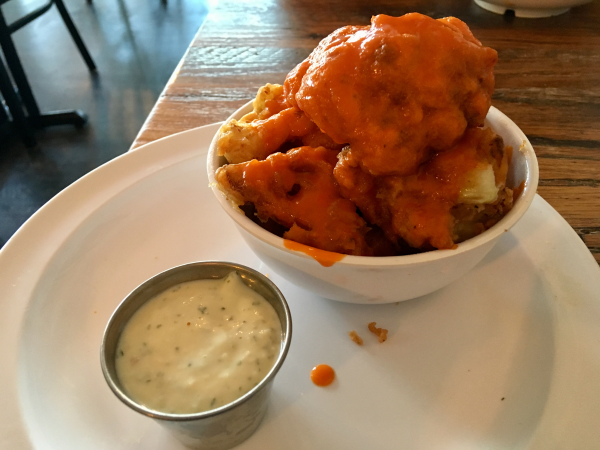
Lulu's!
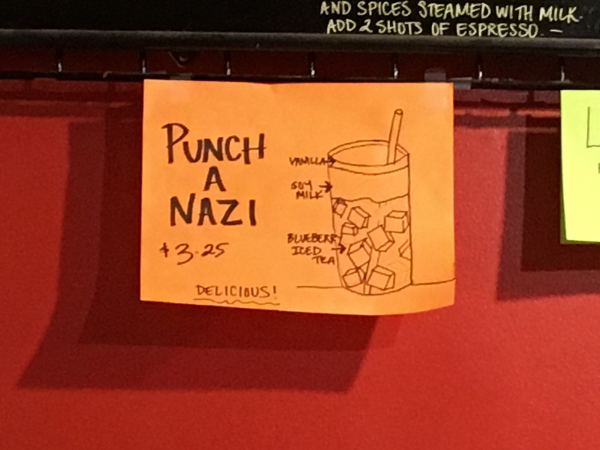
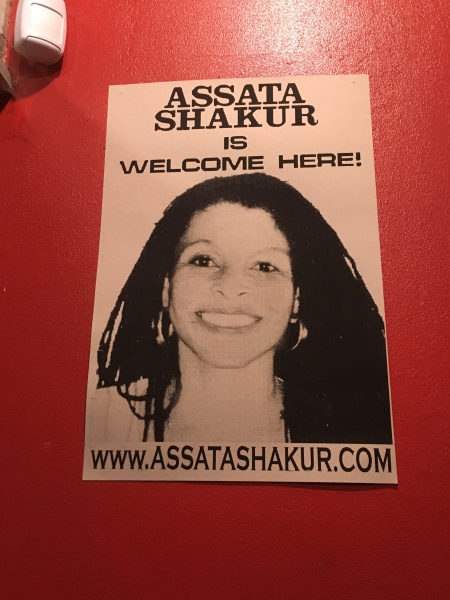
MoKabe's!
DAY TWENTY-FIVE
Tuesday, September 10th
We began our first day in St. Louis in Turtle Park, which sat overhead of both the highway and the nearby zoo. There were three different species of turtle made impossibly large and fun to climb. Four others were still bigger than real turtles but only about the size of dogs. The park was designed and sculpted by the late Bob Cassilly, the man who was largely responsible for how special this city was and just a few years ago had been mysteriously killed in what seemed to be a still-unsolved murder.
On our way back to the car, we saw two corny men with walkie talkies and sewn-on badges standing around. We had a ticket on our car. We'd only been there about 20 minutes and were very confused as to what we possibly could have done wrong. It was for $15 and claimed it was because of a No Parking time for the alleged street sweeps I always saw mentioned but never actually saw at work. I had to walk all the way up the block to find a sign stating this, since the one closest to us, we'd later notice, was pulled out and flat on the ground. One of the two men were excitedly taking pictures of an older woman getting into a car with friends, and I hated the visible glee and seriousness with which he was ruining people's day.
So I said to him, "It's a low job that you have, a low job."
Honestly, I didn't care about excuses regarding survival--you'd never be forced to be a henchman for the state, and there would always be other options that didn't involve taking such a horrible position.
He got all uppity with me and started repeating, "Why don't you get a job?!"
I just calmly repeated, "It's a low job," and shook my head disapprovingly as I returned to our car.
Apparently, while I was having this interaction, the other parking guy went out of his way to aggressively speak to Alyssa as she was taking pictures of the hidden sign we'd missed. She hadn't even spoken a word to him.
We went from there to Forest Park, which was expansive and beautiful. Standing at 33 feet tall and weighing 7,000 pounds was this skinny, alien guy that looked like they were made out of tinfoil, looking up at the sky outside of the James S. McDonnell Planetarium. The sculpture, entitled "Looking Up", was created by local artist Tom Friedman and was actually made of stainless steel. We couldn't afford to actually enjoy the planetarium, and with a whopping three security guards at each entrance there was no hope of sneaking in.
I had to show Alyssa the Citygarden, a nearly three-acre, two-block pedestrian space, sculpture garden, and park in the middle of the gross and intimidating city center of St. Louis. It was such a relieving and unique break from the uninspiring surroundings, where just looking at the roads and skyscrapers were enough to fill you with dread and anxiety--the reason we usually tried to avoid entering those areas anywhere we went. With plenty of shade to sit under for depressed businessmen and homeless people alike, lots of trees, plants, and flowers in full bloom and flourishing in their own rain gardens, some fountains and even a splash pad for kids to play in, and 24 diverse sculpture pieces by world-renowned artists, it was its own portal. It was not surprising that it was thanks to a non-profit and none of it but water and electricity was covered by the city itself. We walked around in the blazing hot sun and took in the art and plants. A very cute child was playing with their mom in the splash plaza, where 102 fountains shot out small geysers of water at random intervals.
We went down by the Mississippi River to check out the abandoned Cotton Belt Freight Depot, which had been built in 1913 and vacant since 1959. It was instrumental in linking freight of cotton, as the name suggests, but its architecture was a tad more fancy than what was typical of such structures at the time. Surrounded by other abandoned buildings, or at least others whose status weren't exactly clear from the outside, the entire area around the train tracks that cut by it were covered in graffiti and populated by homeless people. This was my second time there, and both times now I had also been welcomed by douchebags on dirt bikes revving their way in a wheelie position carelessly toward oncoming traffic like they owned the place, so there was them, too.
The architecture was spectacular, and still mostly intact. The grandiose front doors and access to the other four stories were blocked by a stairway clogged with giant logs and thick wooden planks. The building stretched 750 feet like a wall between the tracks and the field and river behind it. On the other side was a mural that took up the entire thing entitled "Migrate". When we got there, a homeless woman with a dog lying on two stacked mattresses tried to tell us we could only take pictures on the backside of the building, as if she had authority over such a thing. I just ignored her. We met a homeless man on the opposite end as he was building a house inside of it using scavenged wood. He was a lot friendlier. He told us three young men jumped him one night and that his upstairs neighbor broke into his space, but he had such a big smile and calm demeanor despite it. Nearby were the remnants of what I'd always assumed was another unfinished park, where more Cassilly pieces sat, including a small steel bridge, a cave of short concrete silos, and another big turtle meeting mouths with a serpent. It looked like it might have been a fountain at one point.
Further down along the Mississippi, we saw the Gateway Arch from a whole different angle, with a million steps leading up to it crawling with shirtless men miserably working out on and around them. You could see at least the tip of the Arch just about anywhere you were in the city. Seeing it directly from below was pretty incredible, but far too expensive to ever go inside of. We were down there to find an allegedly mile-long wall of graffiti. The flood wall that extended along the river was already plastered in an endless array of graffiti, so we weren't entirely sure when or if we were finding the right wall. But then it eventually became unmistakable: what was known as the Mural Mile, where almost two miles of flood wall had become an urban canvas for art, legal and illegal all done with spray paint. A narrow road for cars ran along it, cutting across tracks here and there, so we drove it to the end and back. Started officially in 1997, there had been an annual event called Paint Louis, where artists from all over the state, country, and world joined to add art to the walls over the course of Labor Day weekend. In 1998, the event saw appearances by Fat Joe and Big Pun, and the Guinness Book of World Records came to christen it the longest mural in the world at 1.9 miles long. It had successfully happened every year beginning 2012. Before that, though, in 2001, a buncha graffiti writers went a little too crazy and bombed the fuck out of much more than the flood wall, causing the city to shut the event down for eleven years. Thankfully, two of the original founders started it back up and regained the support of the city.
For dinner, we ate at a no-frills but punk-as-fuck vegetarian pizza place called Pizza Head. You walked in and to your left was their small menu on two chalkboards. You had the options of slices or a 20-inch pie with their eleven vegan topping options--while they offered cow cheeses, they were completely vegetarian. No appetizers menu. That was that. Punk played overhead, tables were covered in vintage show flyers, the walls were painted all-black with splattered red on top. Less was more, in my opinion, so I loved the place. We got a whole pepperoni pie with their house-made cashew cheese. The cheese was more like a ricotta and it weighed the giant slices down a bit, but it tasted incredible. They covered it in pepperoni in a way I'd only seen on non-vegan pizzas, and it was the most authentic tasting pepperoni I'd ever tasted. The sauce and crust were perfect. We each got through three huge slices each before tapping out. This was the first pizza place we'd visited on the trip and were so glad it was this one.
After that, we deliberated a little and then splurged on a hotel room. After over two straight weeks sleeping in the car every night, we decided the weather was just too unbearably humid to endure, especially if we wanted to have enough energy for City Museum the next day. We blasted the AC and spent a lotta time in the big comfy bed. We took advantage of the constant marathons of Shark Tank on TV. After checking out, I would go on to complain to hotels.com over the phone for a half hour, exaggerating the seriousness of the loud and drunk people loitering in the lobby down the hall from our room, until I got a $100 voucher toward my next booking. Both the website and the hotel definitely put up a fight, taking turns sending me to one another under the premise that it was the other guy's responsibility to issue refunds. As I'd always experienced, though, with enough persistence, you could get something out of any company. Still, I wished we were rich kids and could stay in hotels every night.
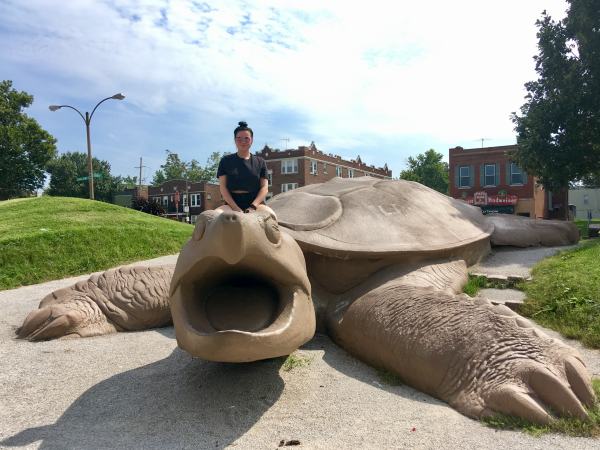
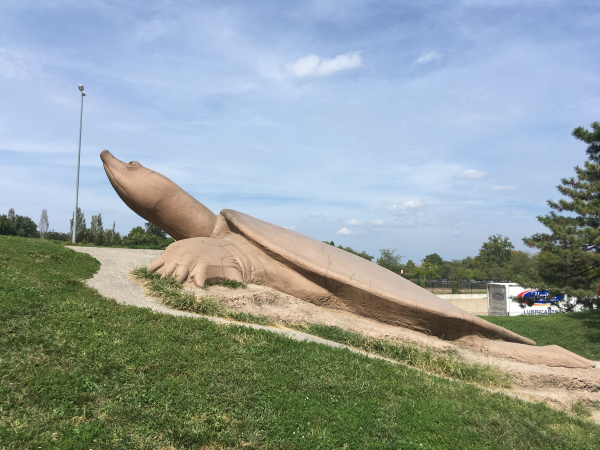
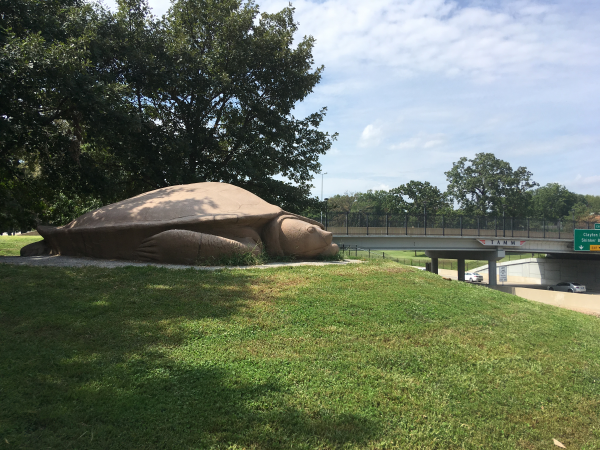
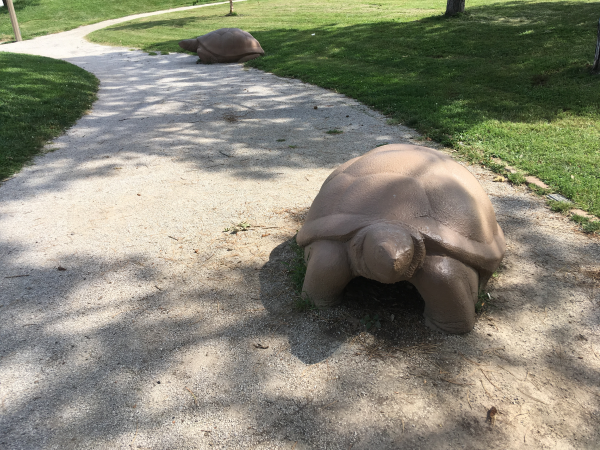


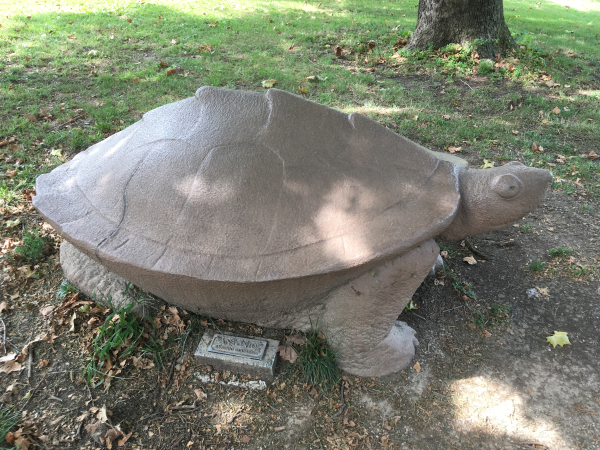
Turtle Park!
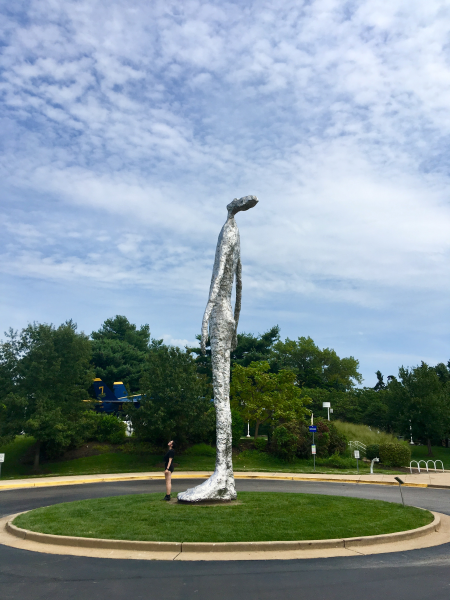

Tinfoil alien guy outside the planetarium (Alyssa for scale).
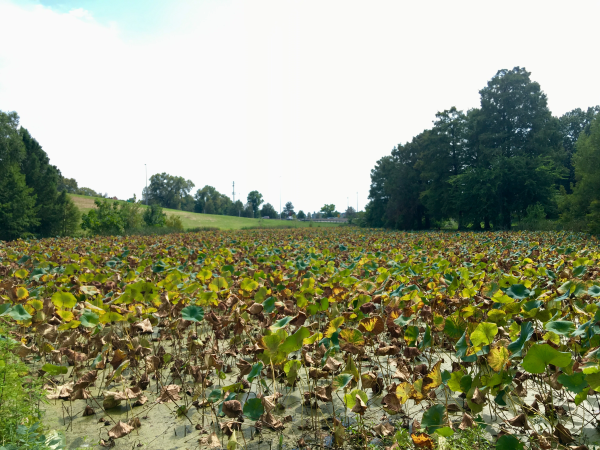



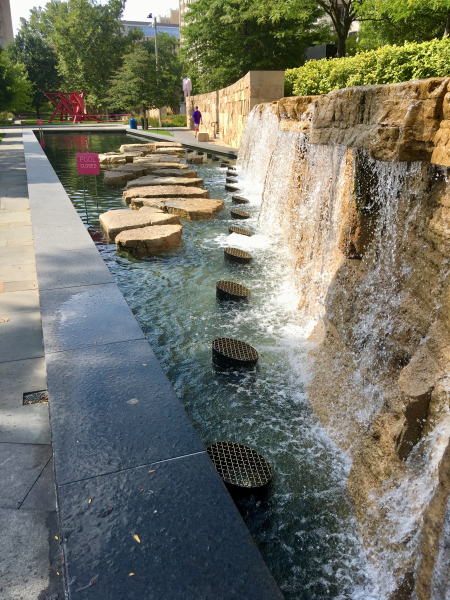
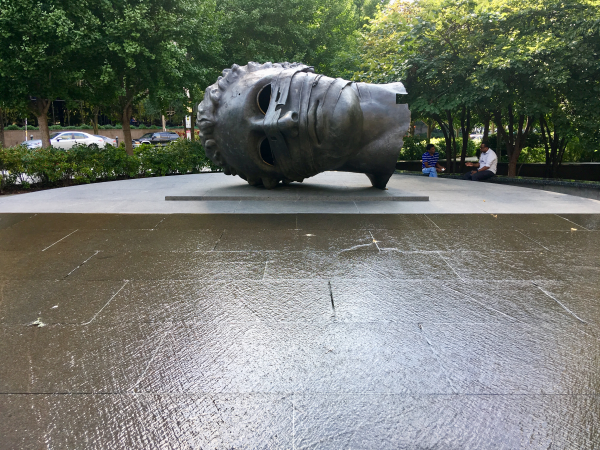
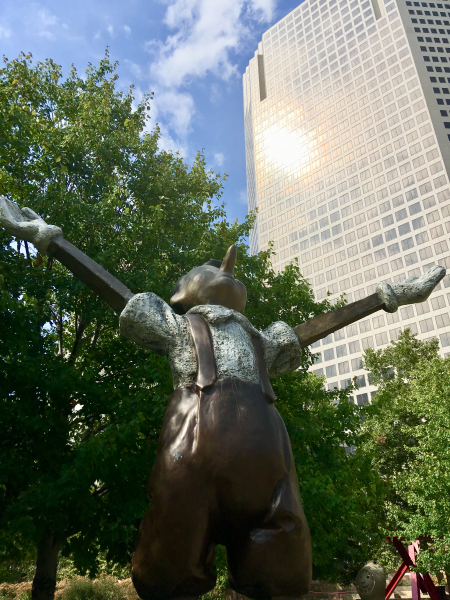
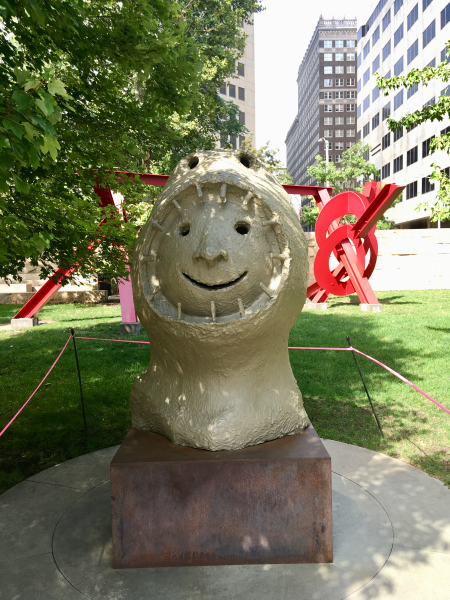
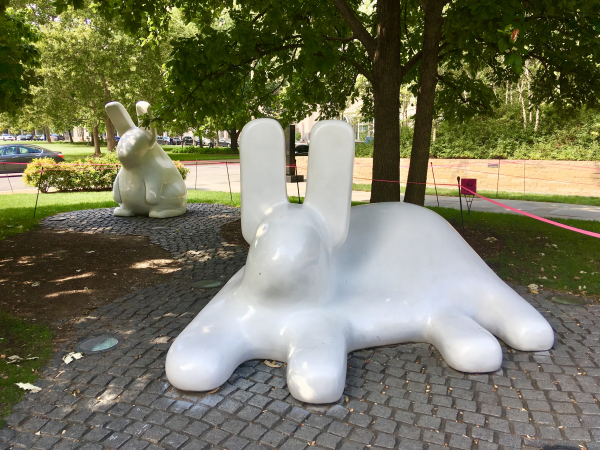
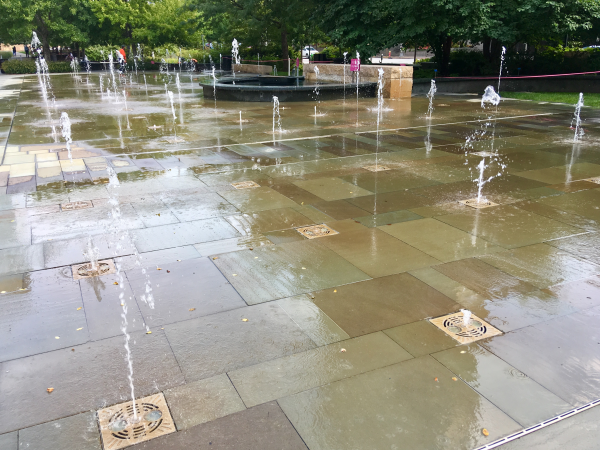
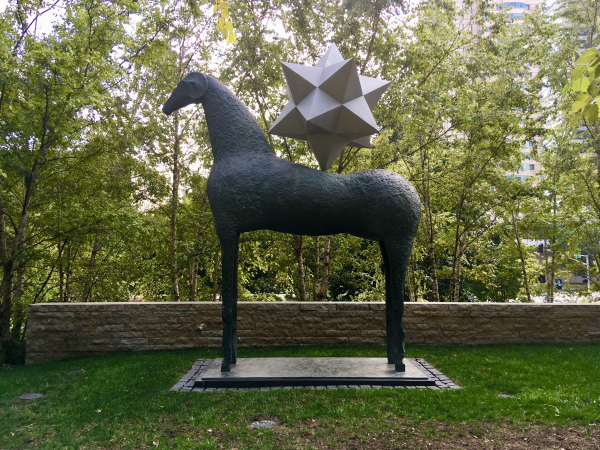
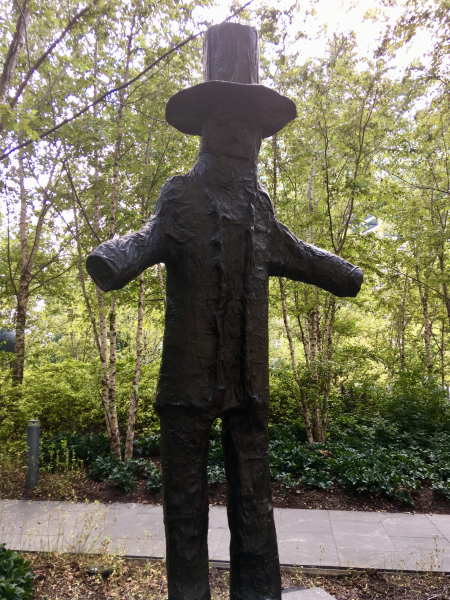

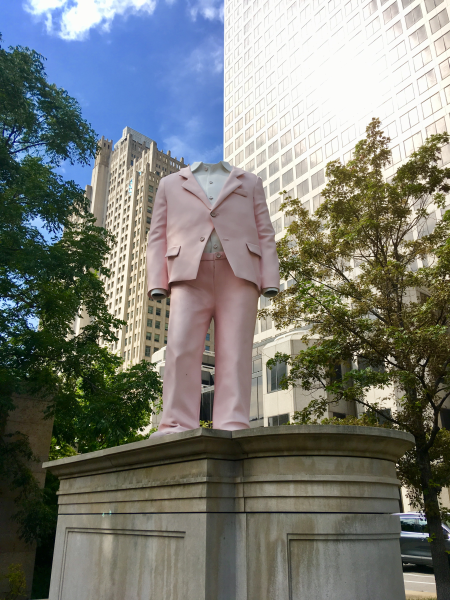
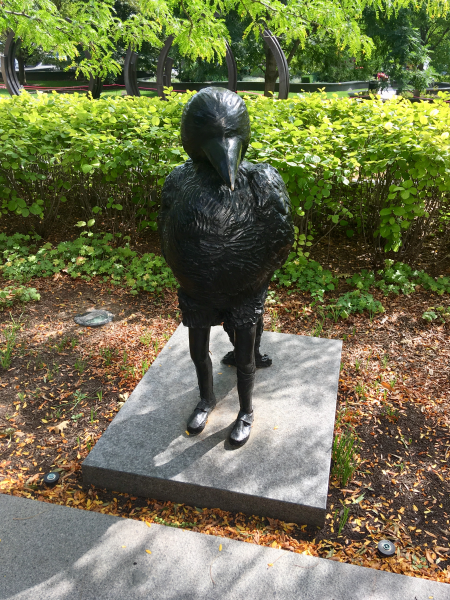
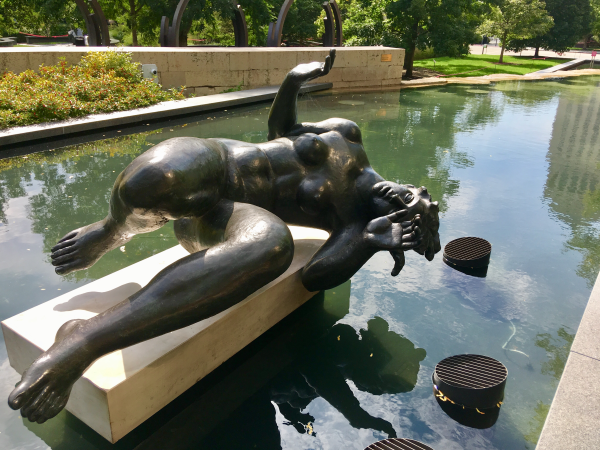
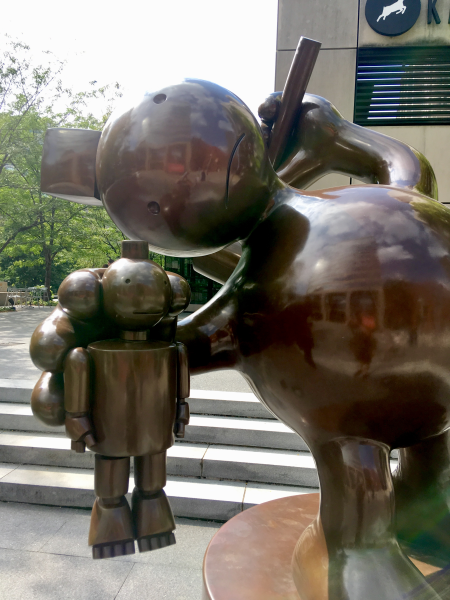

Citygarden!

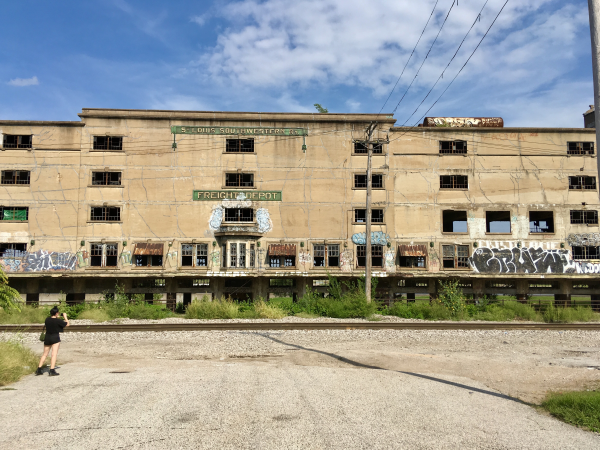
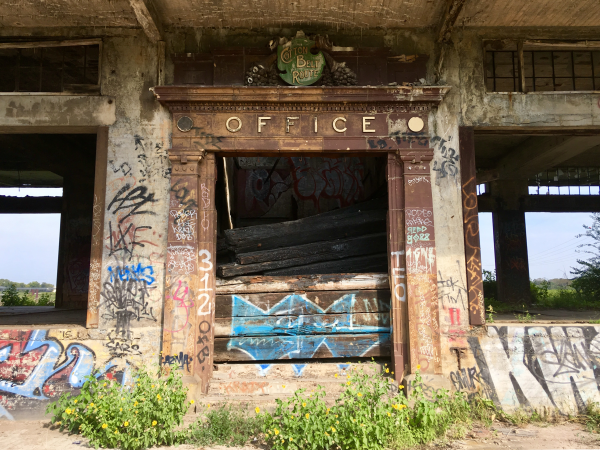

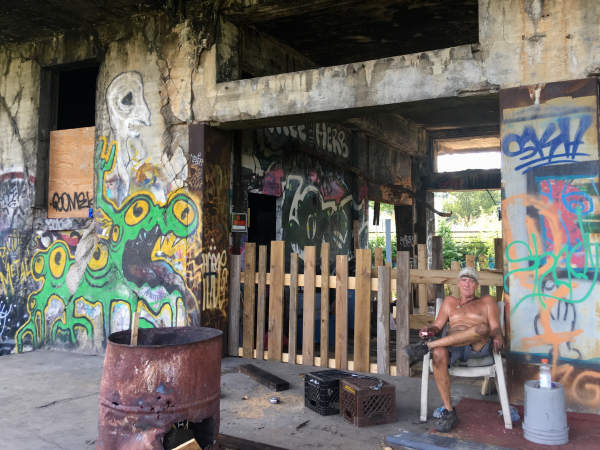
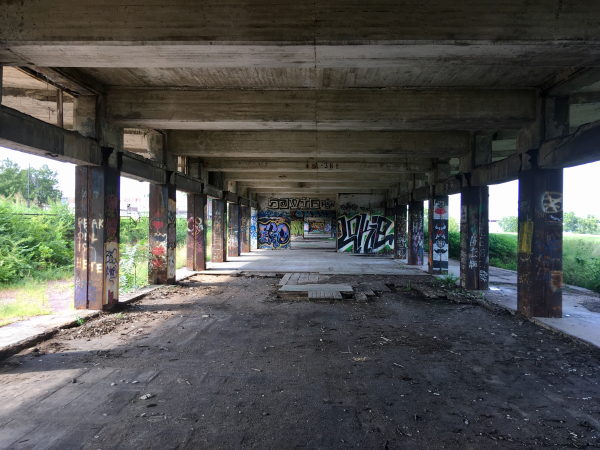


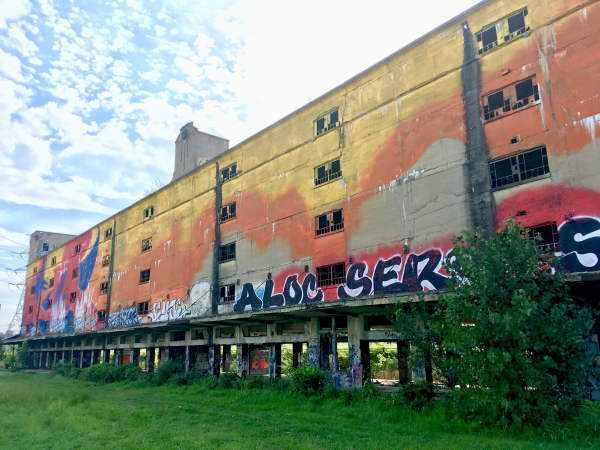
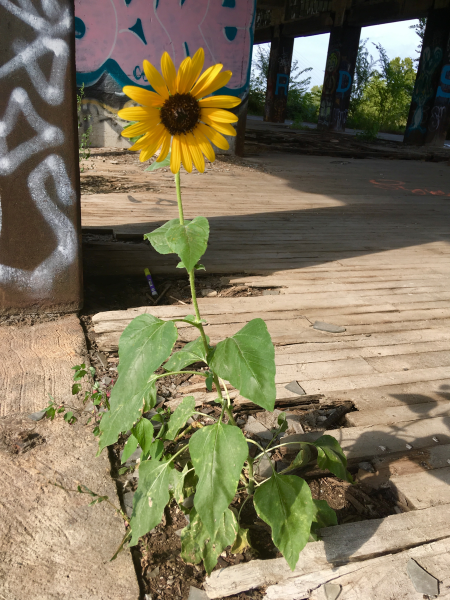
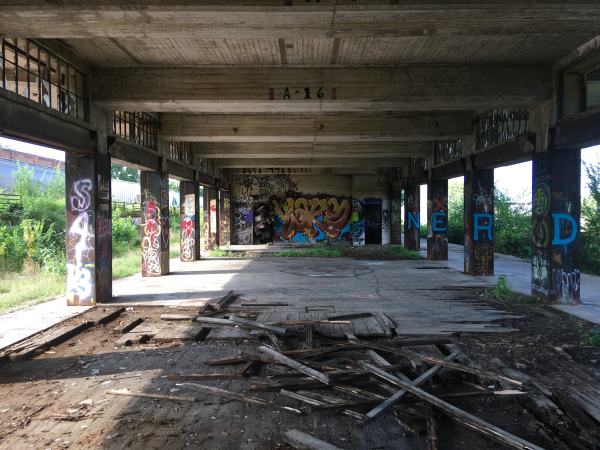
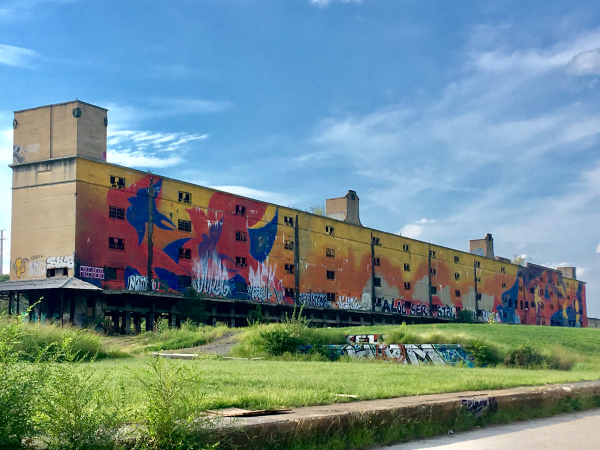
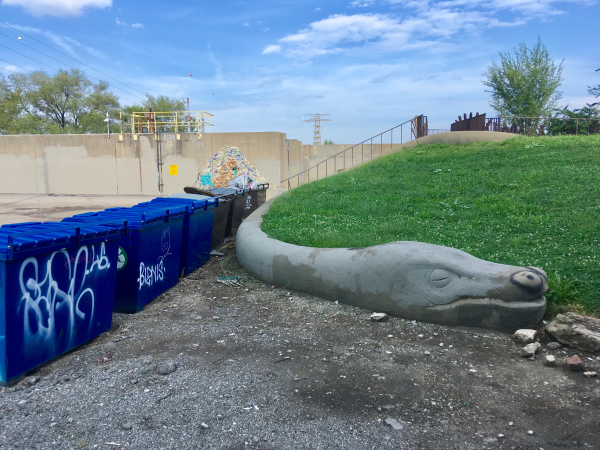
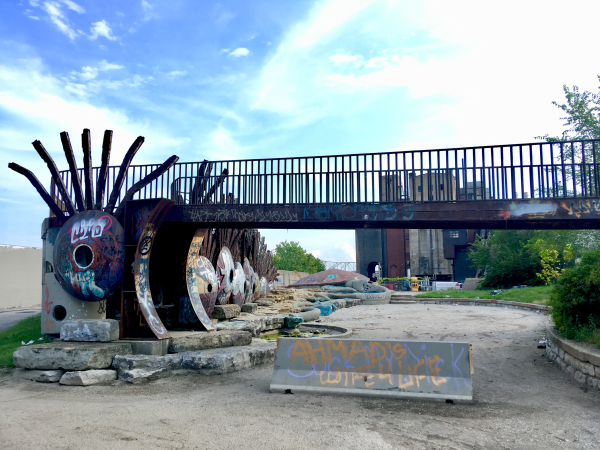
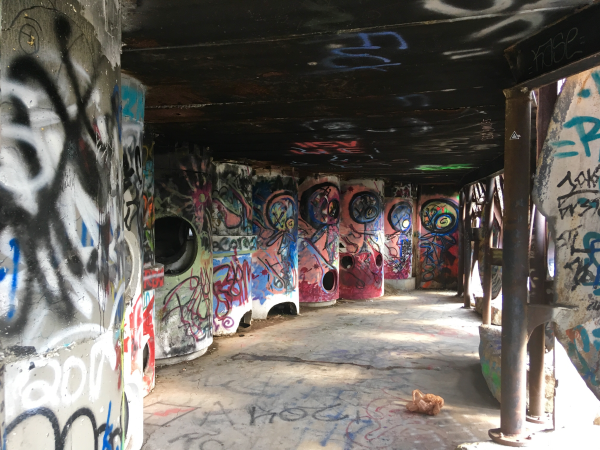
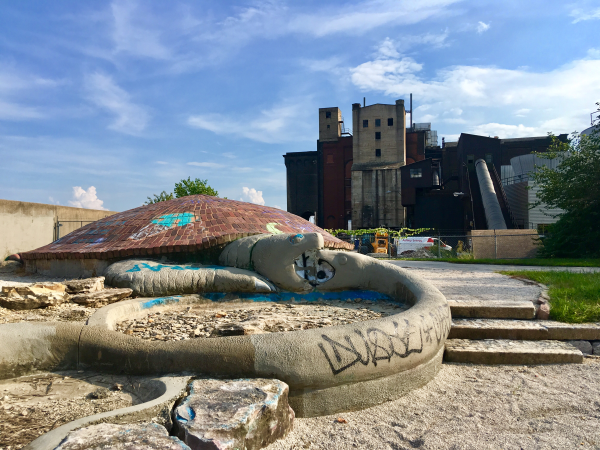
The Cotton Belt Freight Depot!
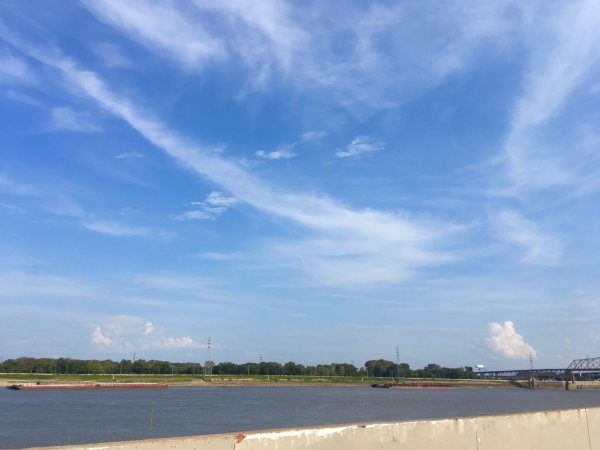
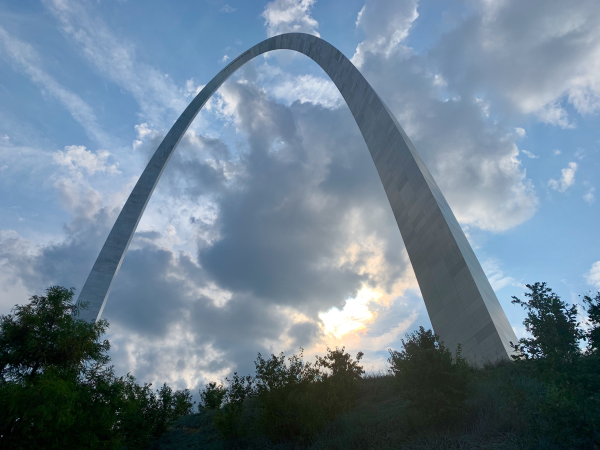
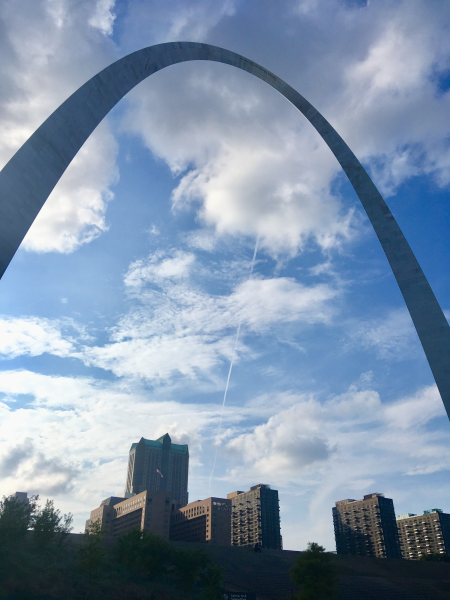
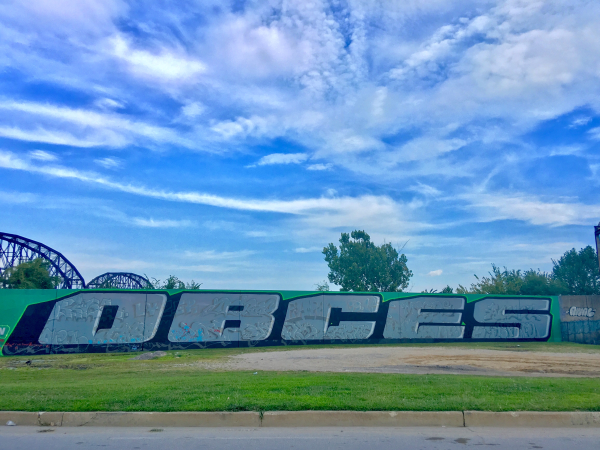
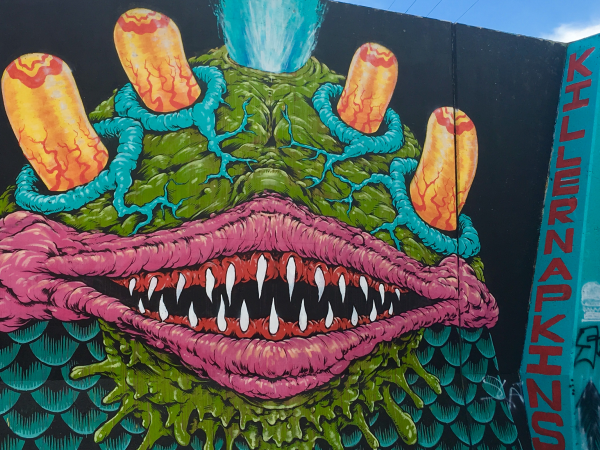
Along the river, under the arch, and along the Mural Mile.
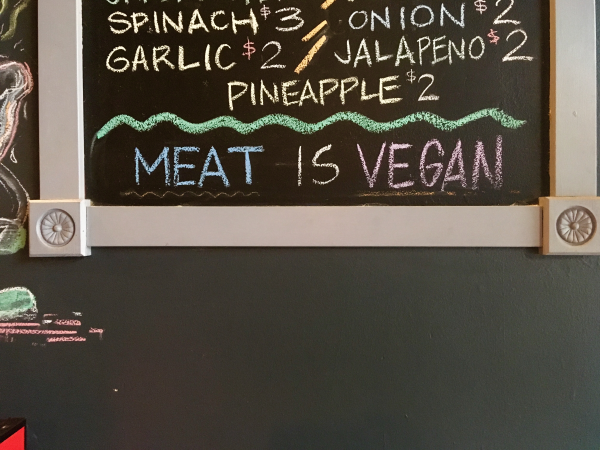
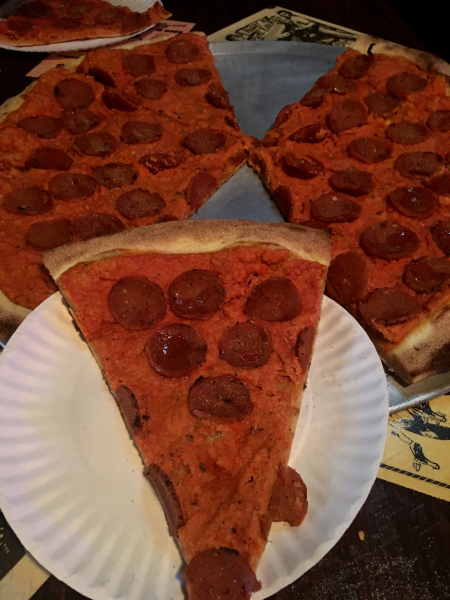
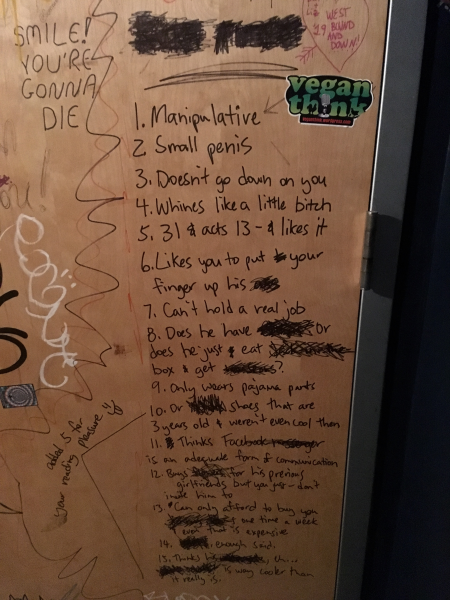
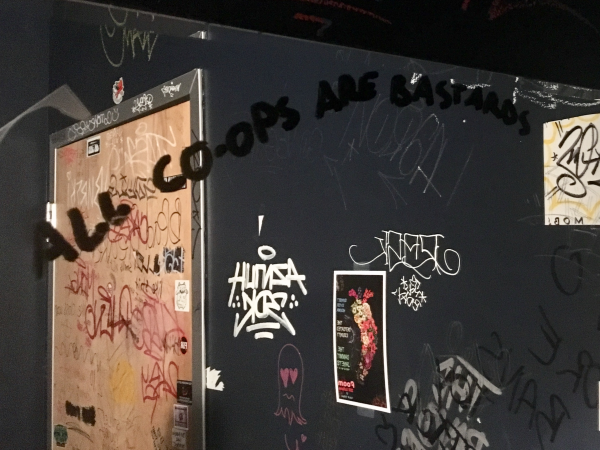
Pizza Head!
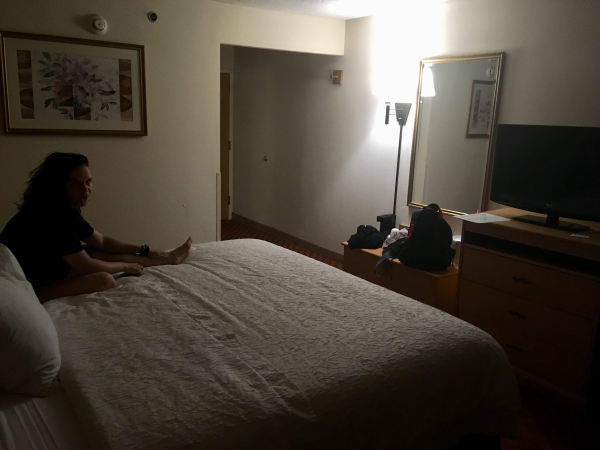
Not a Walmart parking lot!
DAY TWENTY-SIX
Wednesday, September 11th
Well-rested and rejuvenated from a night in an actual bed, we spent the entire day at City Museum, one of the single coolest places in the entire country. It was nearly impossible to describe with words or even pictures, but it was basically a large-scale, 600,000-square-foot adult playground maze where everything was climbable, typical features like slides and jungle gyms were taken to their logical extremes, and hidden nooks, passageways, and tunnels were everywhere. There was no map of City Museum and it was constantly being added on to by local artists and architects. It had been constructed almost entirely from reused materials and pieces from other local buildings, and City Museum itself had taken over the old International Shoe factory as their home. Like much of the city, it was created by Bob Cassilly, who served as its art director up until his murder in 2011.
We started our day there on the roof, which offered us an incredible panoramic view of the city from ten stories up. The school bus which partially hung over the edge of the roof was closed for reconstruction. We climbed inside of the dome, a piece from an old planetarium, which was topped with a 24-foot metal preying mantis sculpture and allowed us to sit or stand in a cage suspended very high above the floor beneath it. We rode the Ferris wheel which, as an acrophobic, was at first terrifying for me. Alyssa got a big kick out of how scared I was, as I squeezed my eyes shut and hyperventilated. I got used to it, though, and it offered us a really special view of everything. We went down the long slide from the dome, which gave me a pretty bad scrape on my back by the time I reached the bottom. We climbed to the top of an enclosed cage structure where a bird was perched, singing by themselves. To get back down to the first floor, we went down the 10-story slide. My feet started hitting the sides, which slowed me down a bit, but the overall experience was still somewhat disorienting because it just... kept... on... going, and my body was confused why.
Back at the first floor, we decided to go outside to explore what they cleverly called "MonstroCity", a web of bridges and tunnels made mostly out of rebar and steel wiring, which took visitors between two airplane fuselages, a castle turret, a 25-foot cupola, a fire engine, across a small bridge, and hanging over two large ball pits. We crawled through it all. Everything was covered in what were basically steel vines, and if you didn't look close enough you'd sometimes miss that there were paths you could climb in the middle of their tangled bushes. Climbing through narrow, quivering tunnels of thin, twisted beams carrying you a hundred feet or more above the concrete was at times stressful. At one point, I was pretty sure I was just too fat to flip and turn my body around to get to the other end of one path, causing me to have a panic attack as Alyssa sat and watched, but I made it, albeit with the leftovers of the most severe anxiety of a momentary claustrophobia. My palms were covered in thick lines of red and purple contusions by the time we rested. Worse, under the sun in 90-something-degree weather, certain surfaces of metal or steel were hot enough to actually burn you. After over an hour climbing around MonstroCity, we took a break and got popsicles from the concession stand back on the roof. We each got a kiwi pop with real thin-sliced strawberries in them.
They were very yummy.
We sat inside for a bit by a fountain of koi fish, both of us drenched in sweat with sore hands and knees. Inside was one big art piece, where everything seemed to form an animal face, either through a mosaic of repurposed tiny bits or an actual giant sculpture taken from some defunct local business. Most of the time, you could climb into their mouths or at least on top of their heads. There were a lot of indoor fountains, too, including a very big tank of fish. People had of course thrown quite a bit of change into it, but we also noticed a dollar bill stuck to the bottom. We slithered around everywhere, peeking into every hidden nook and passageway. My knees were killing me from crawling so much on hard surfaces. We got on top of the big white whale and then went through some plastic, Chuck E. Cheese-type tunnels. Sometimes we'd find somewhere new, sometimes we didn't--there was no way to know if we'd found an actual pathway or not, nor where it would lead us. We climbed and walked through passageways that kept us close to the ceiling of the first floor or hidden behind walls until we got to the area enmeshed in more rebar, metal bars, and pieces of stained tree branches.
We took it to the third floor where a little bit of everything could be found. There were sculptures from, and entire facades of, local buildings that were no more, with plaques noting their origins. We watched children play in a suspended net connected to a big black widow staircase. They had an extensive arcade of vintage pinball games. There were walls and rows of cabinets preserving artifacts both of historical value and of what most would consider very neatly organized, but still hoarded, trash. A bar with room for live music performances was there and housed a gigantic pair of underwear. Another large room housed millions of preserved insects, entomological posters, skeletons, hives and nests, and taxidermy animals. Sadly, we'd missed the daily human circus performance at 2. There was a very elaborate miniature train setup with lots of monsters and severe weather on its path, all erected on top of a big millipede monster. There was the skateless skate park where a whole room of old skateboard ramps were designated for kids to just run up and down and slide on. There was an arts and crafts room open to all ages. The view from the mezzanine was awesome. Alyssa insisted on climbing through another wiry tube from one side to the other, where a bulbous cage was, as some sort of personal challenge. We also explored their elaborate cave system. On that particular day, they closed at 5, and we were fully spent shortly before then. By the time we left, we had been there for almost five hours.
Per the recommendation of our great friend Sean Murphy, we got dinner at another unlikely spot for excellent vegan food: a small local barbecue joint inside a big, polished wooden building called Smokee Mo's. To our surprise, they had an entire separate vegan menu, which hung proudly from the ceiling on its own giant chalkboard. I got a platter of their deliciously smoky barbecue tofu with sides of baked beans, red potato salad, and mac and cheese. It was absolutely amazing--everything a vegan would want out of an authentic barbecue. Everything, even the sauces, were marked as vegan or not, and they apparently even had a separate dedicated vegan cooking area! We had one of their big vegan cupcakes for dessert. While there, I watched a woman toss her tray of stuff into the garbage, including the silverware she was at first keeping separate. I'd noticed they had several signs pleading that people not do it, so we concluded it was a real problem they faced from the hicks who dined there? I picked them out of the trash and brought it up to one of the owners and she told us they lost 300 forks in just one year from people throwing them out!
From there, we returned to our hotel room, which we were so grateful to have waiting for us. I could not imagine having to rest after a day at a place like City Museum in the chair of a Starbucks or in the back of the car at a humid Walmart parking lot.
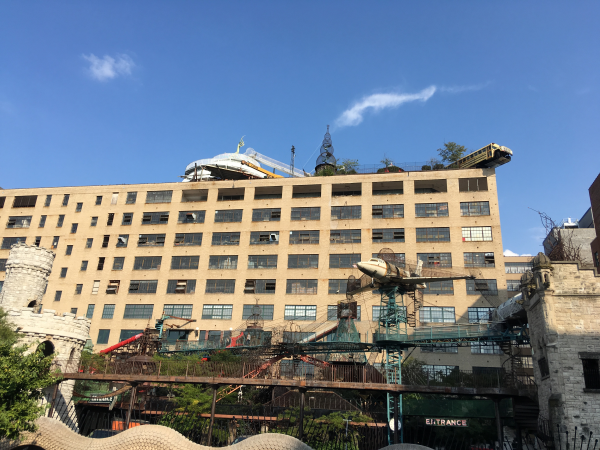
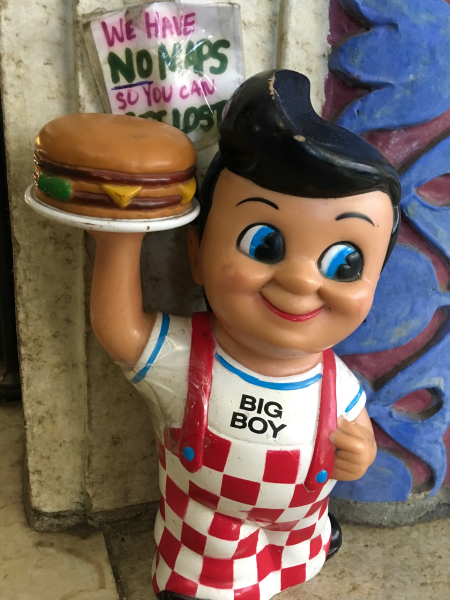
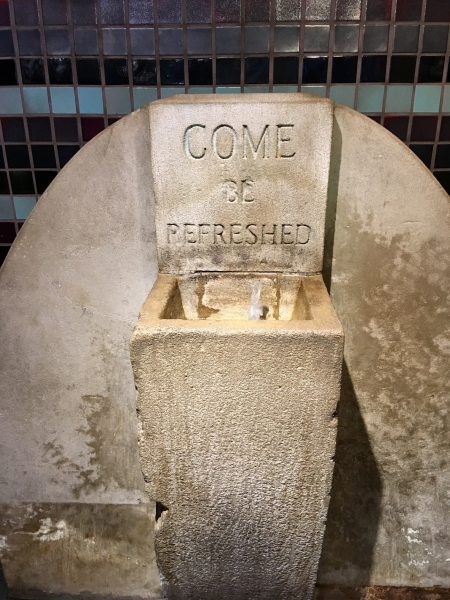
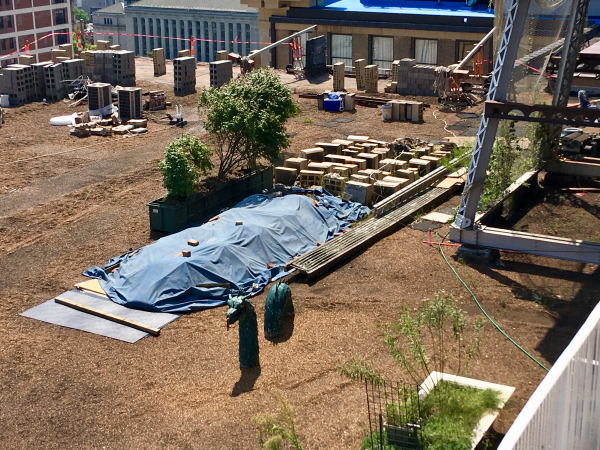
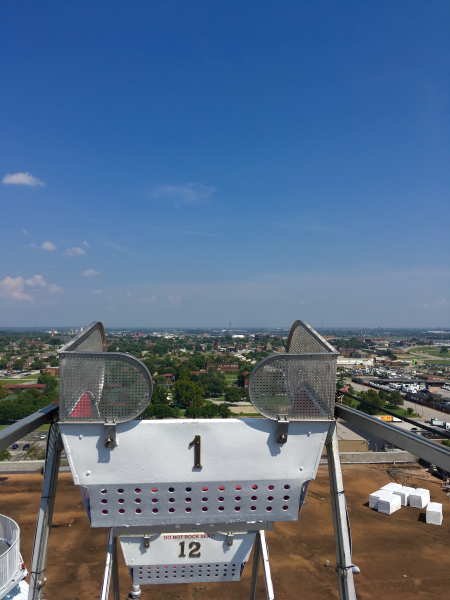
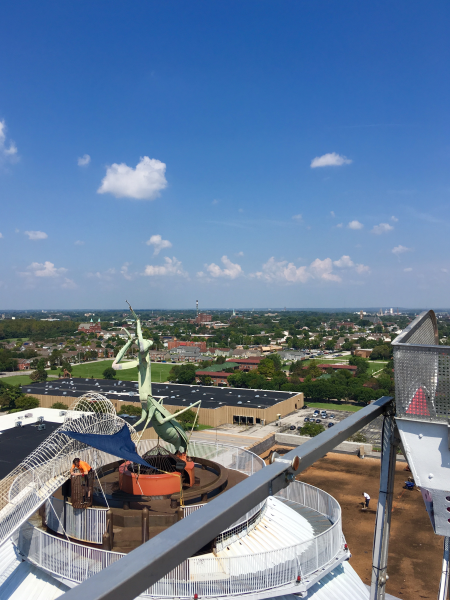
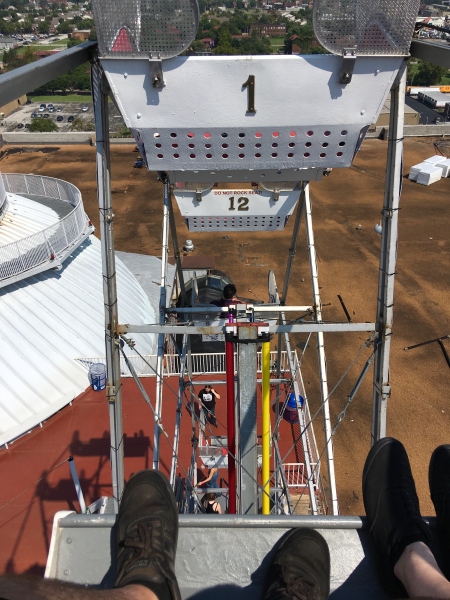
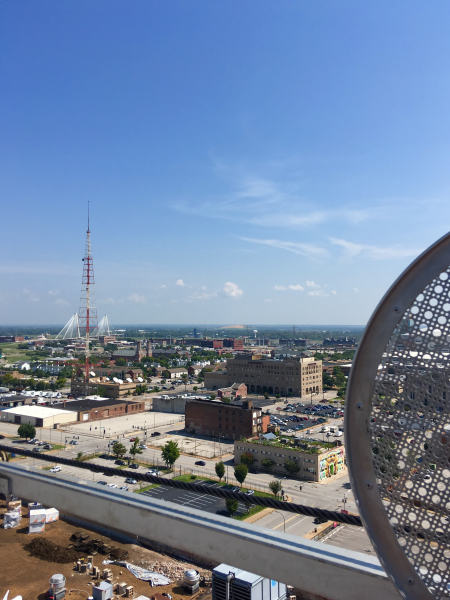
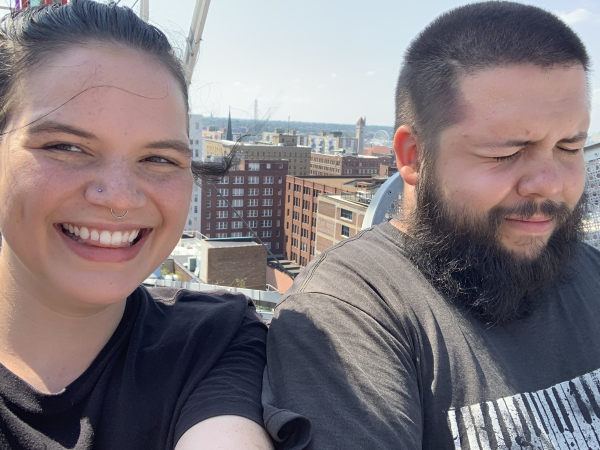
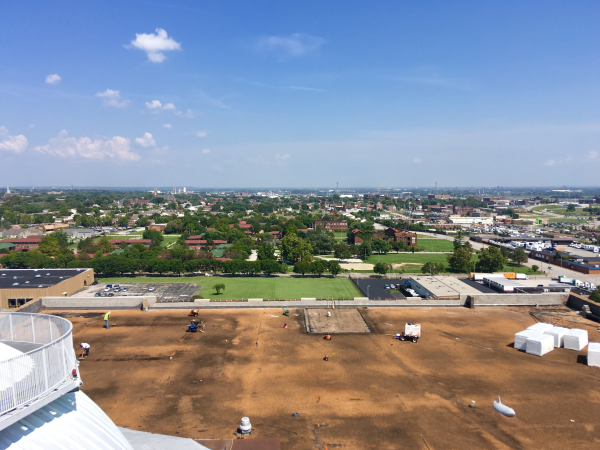
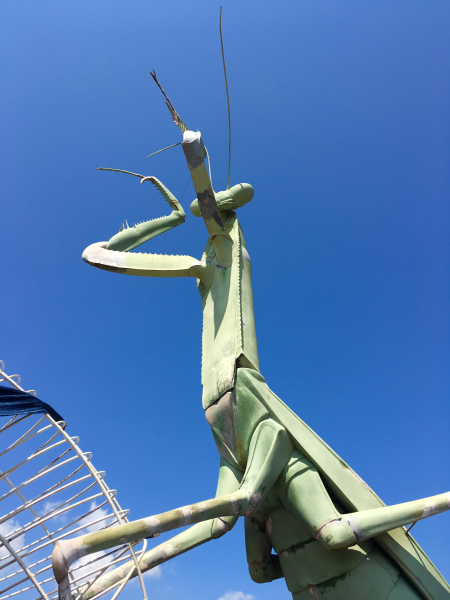
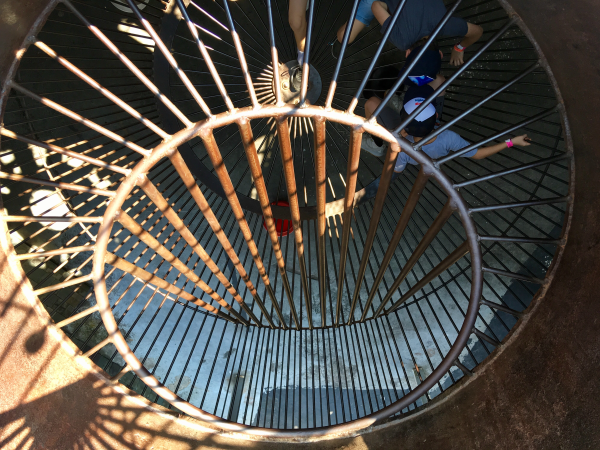
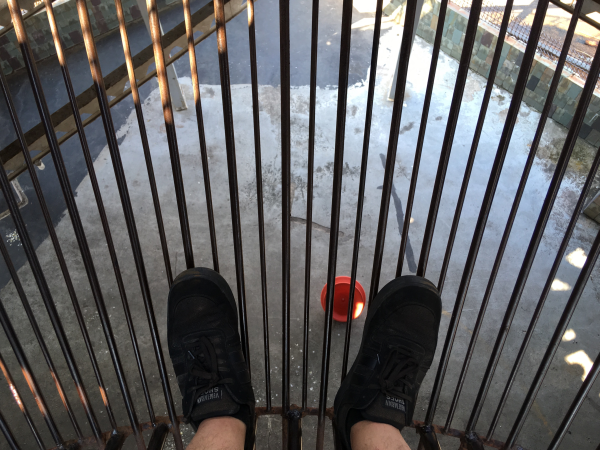
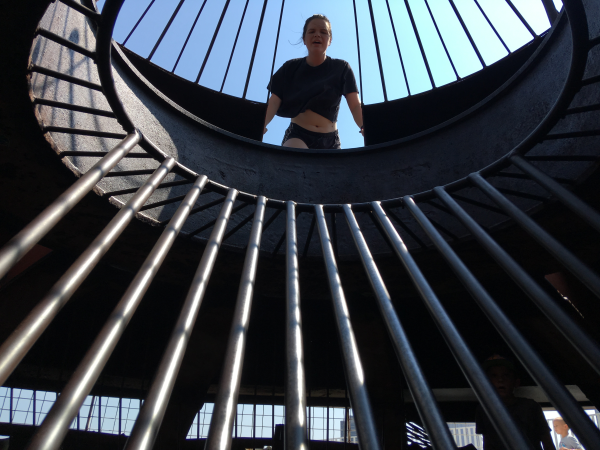
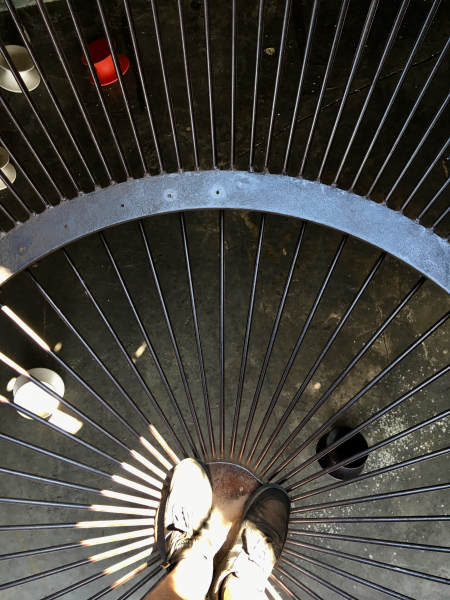
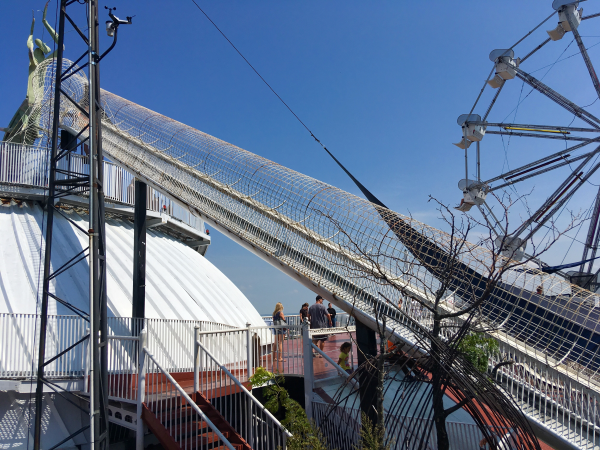
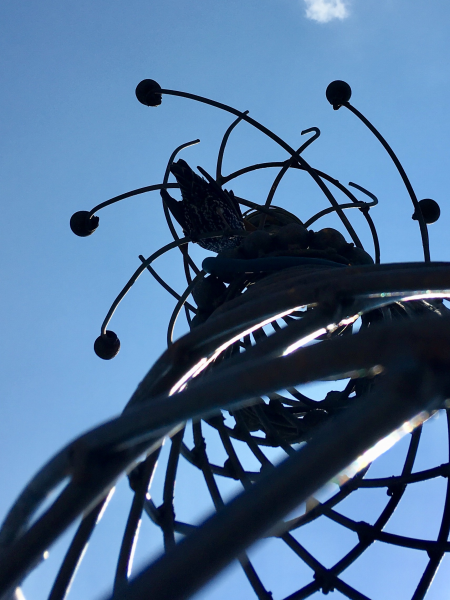
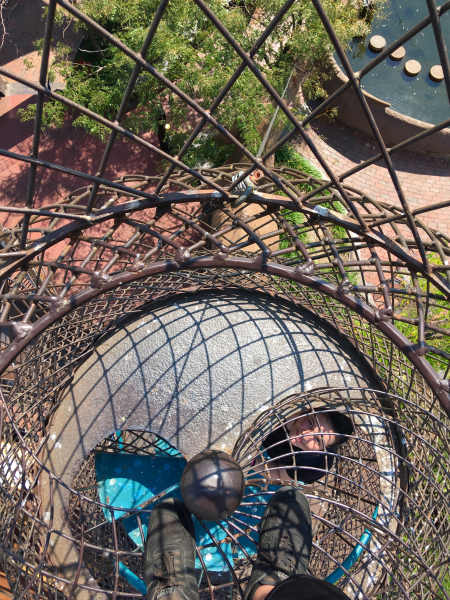

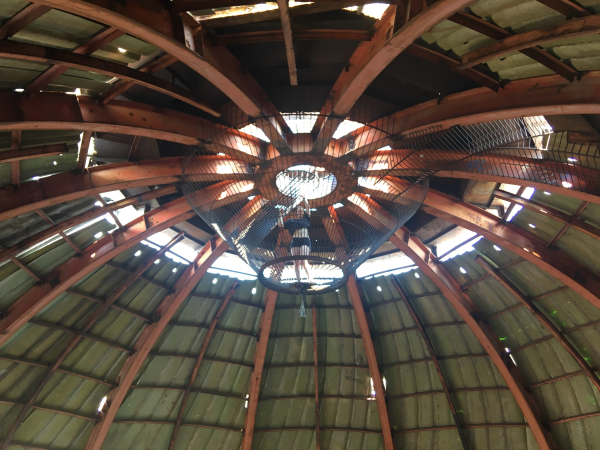
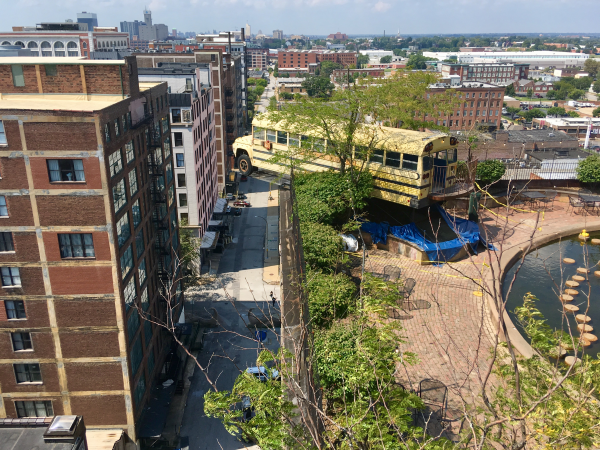
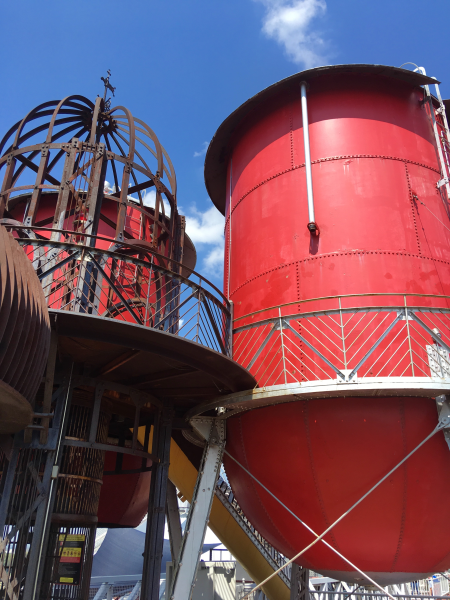
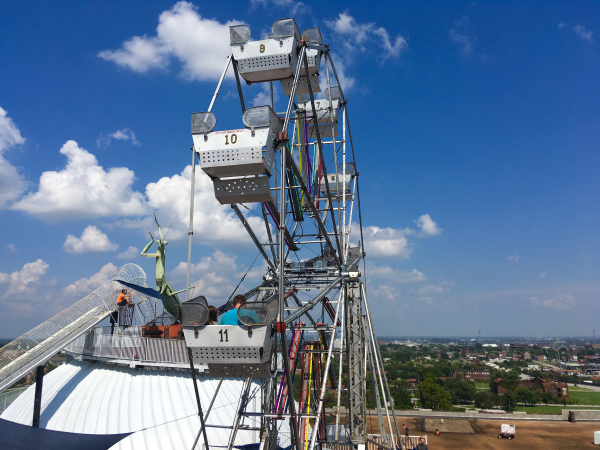
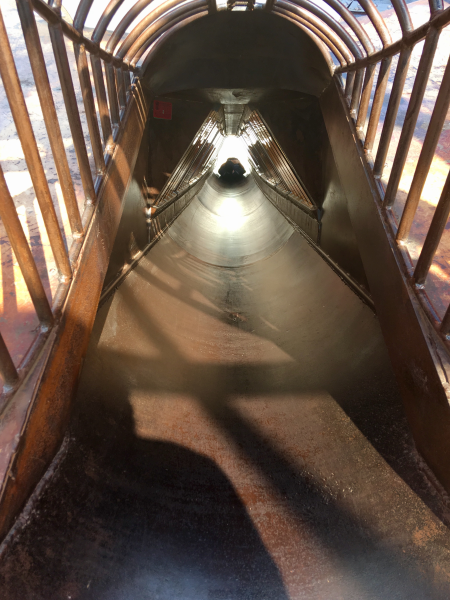
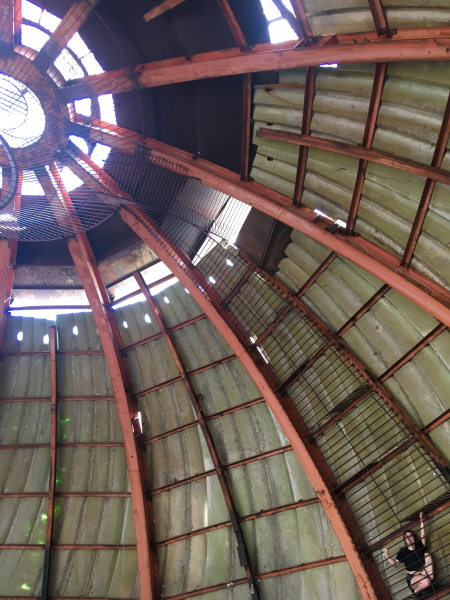
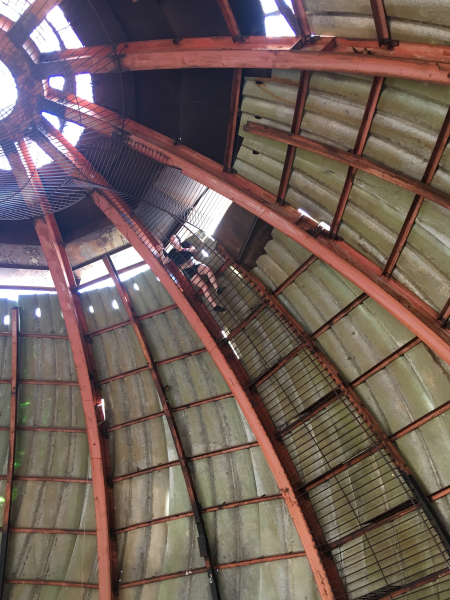

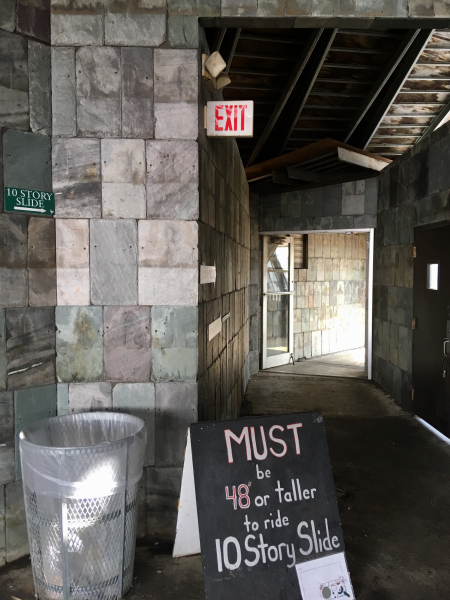
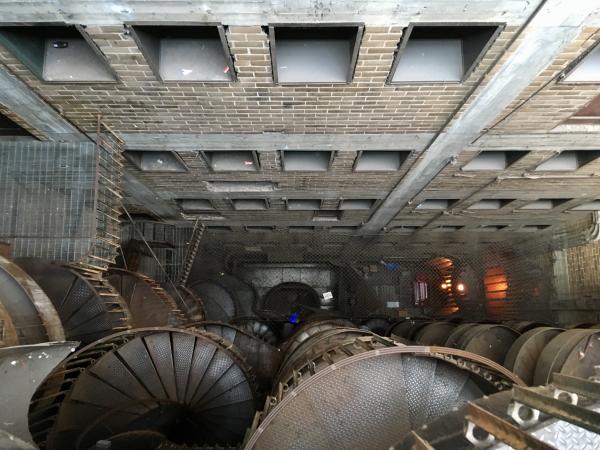
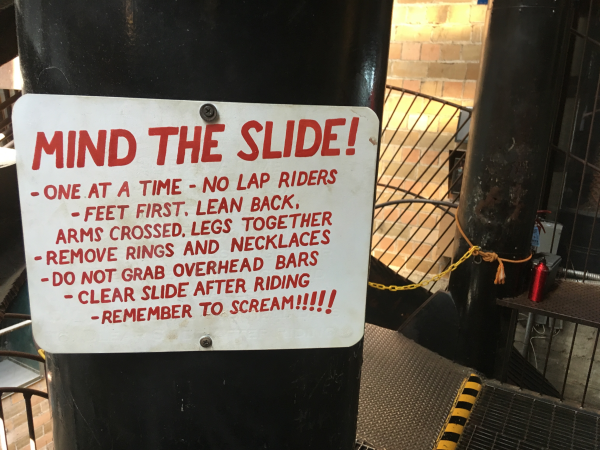
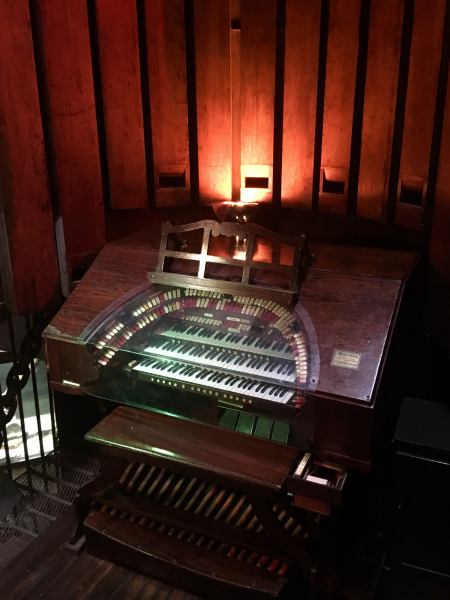
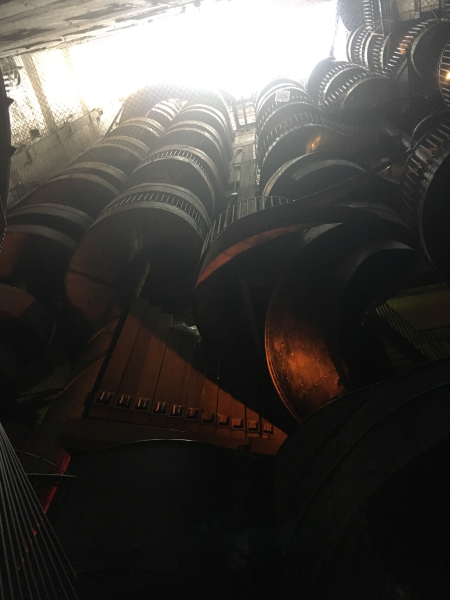
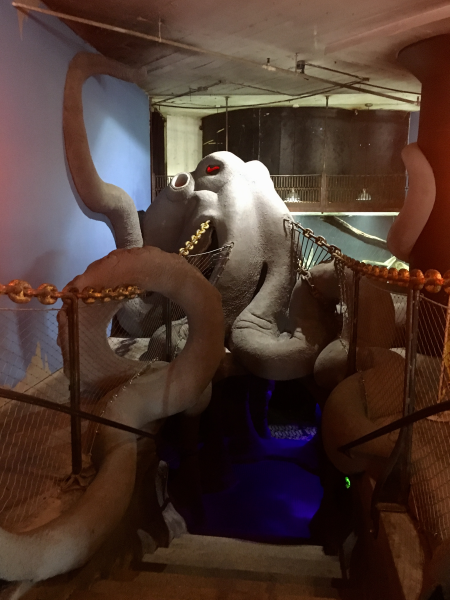
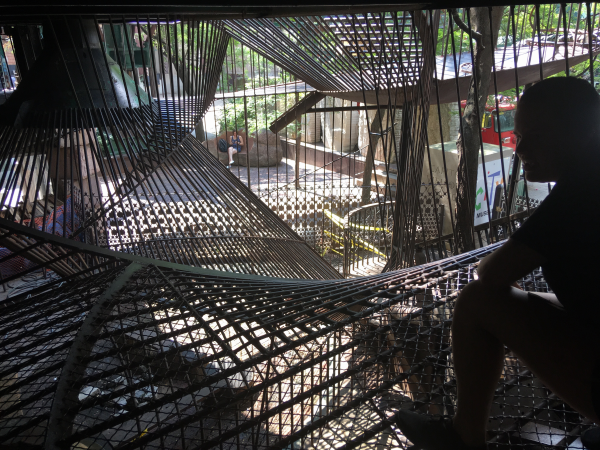
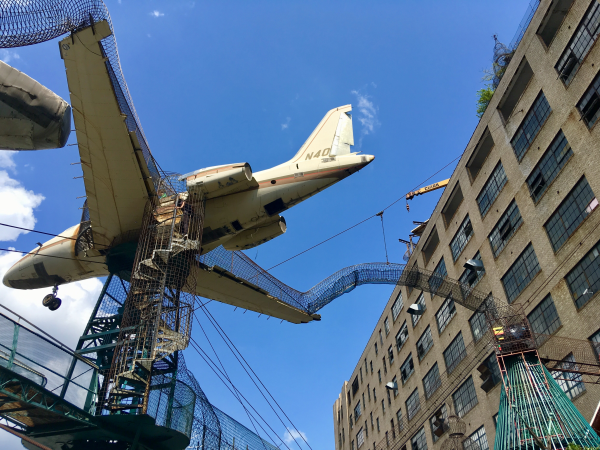
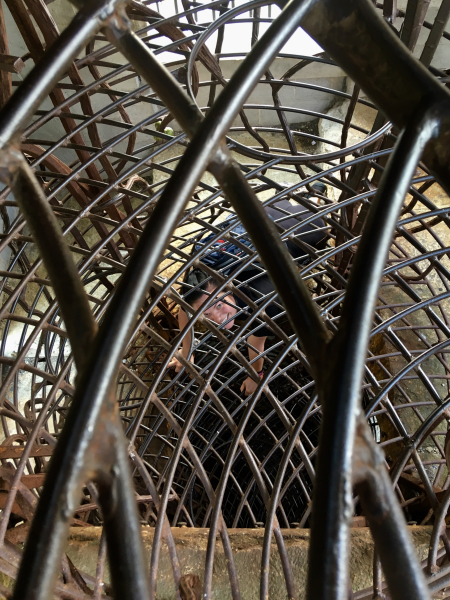
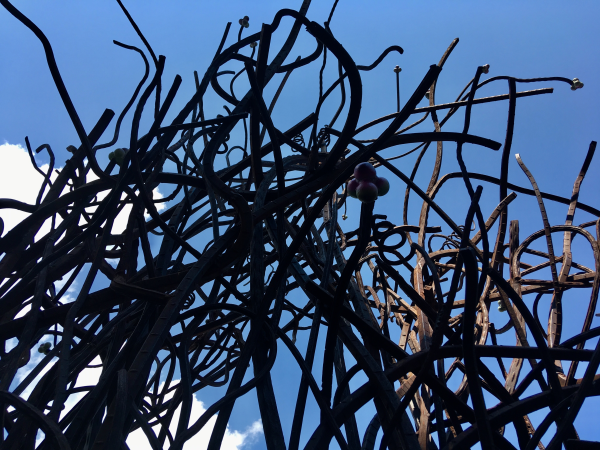
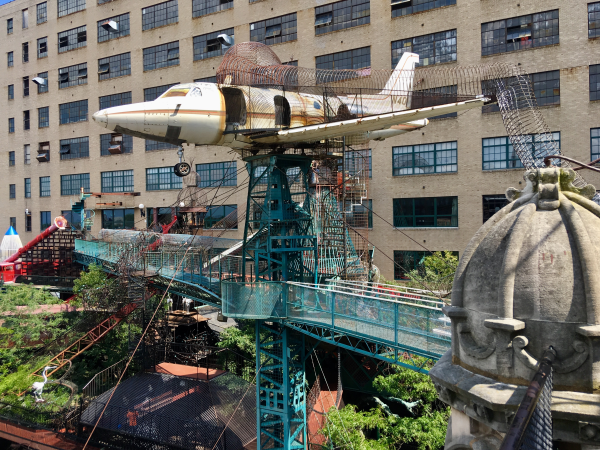
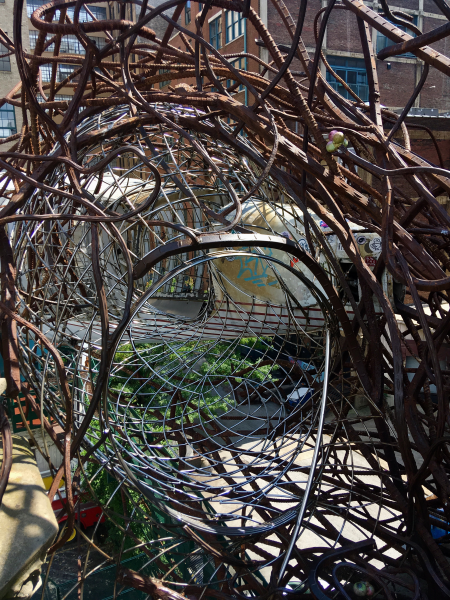
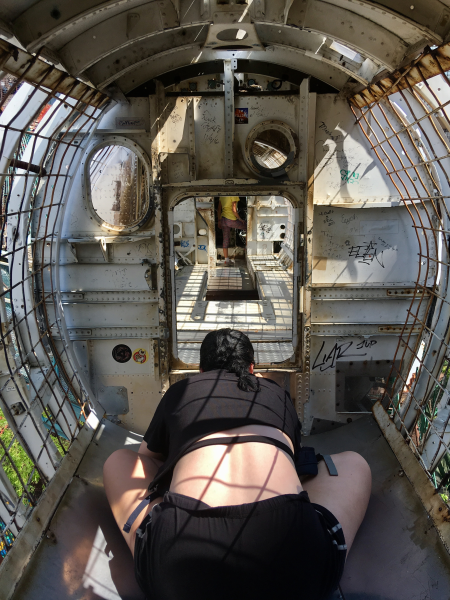
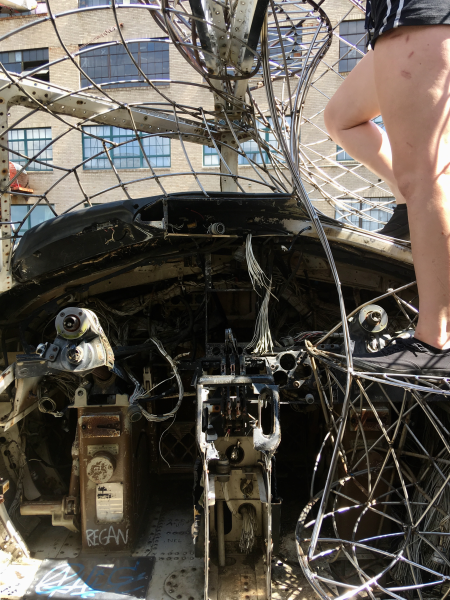
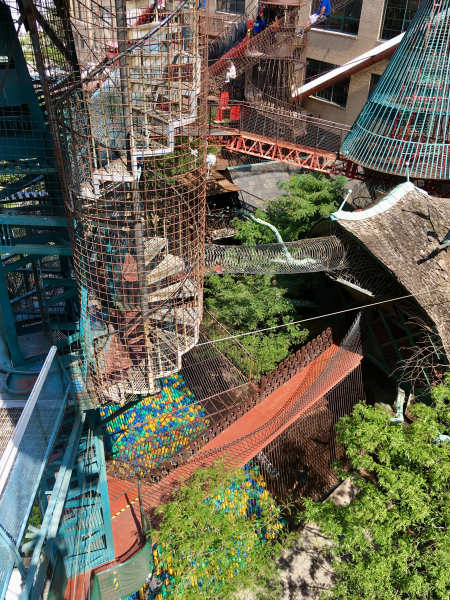
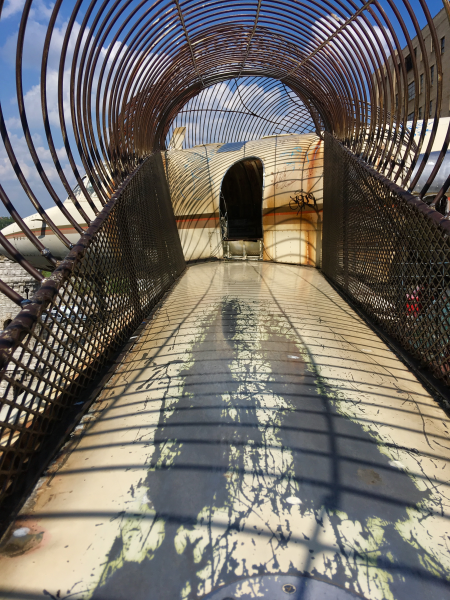
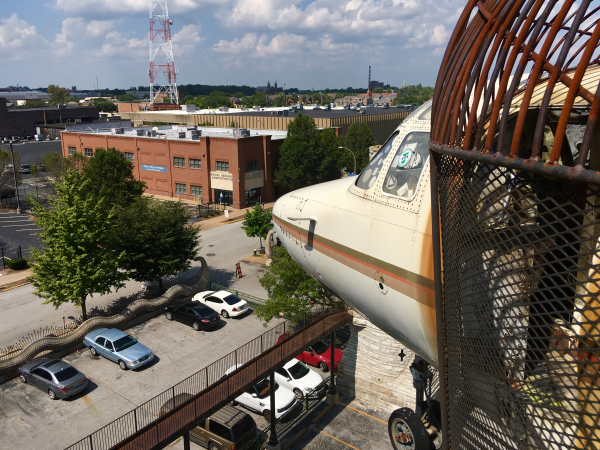
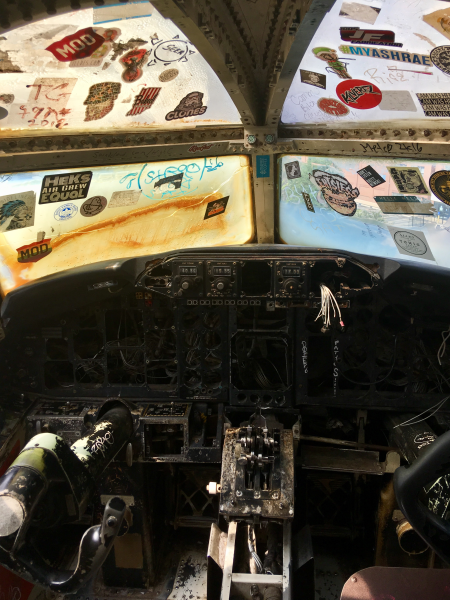


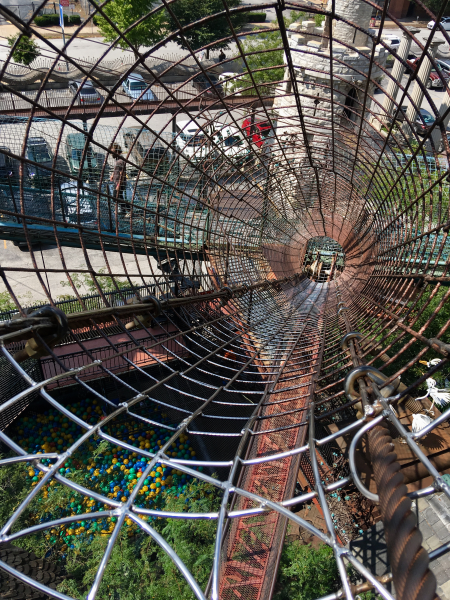
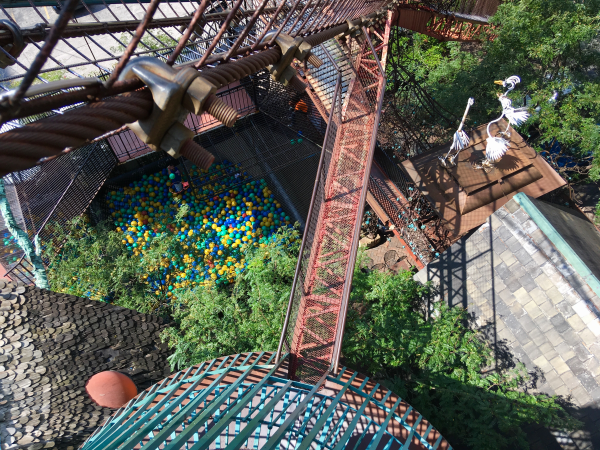
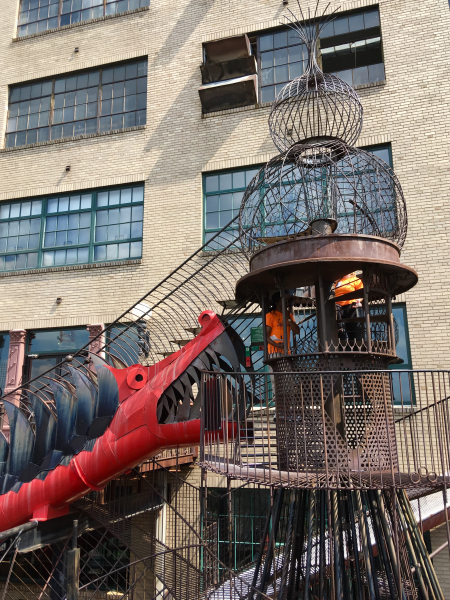
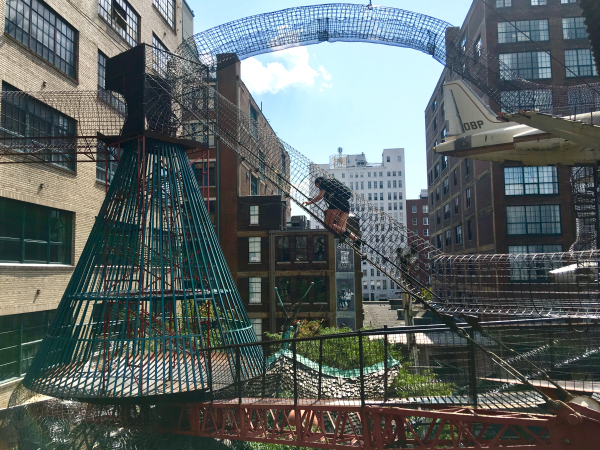
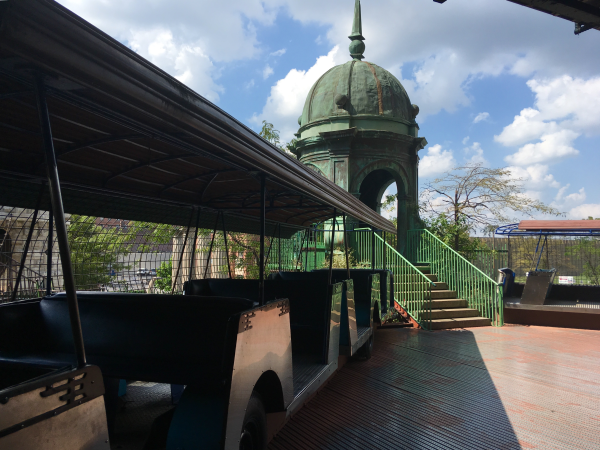
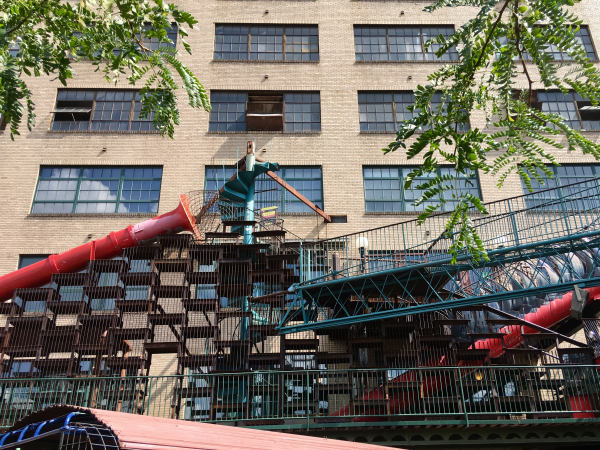
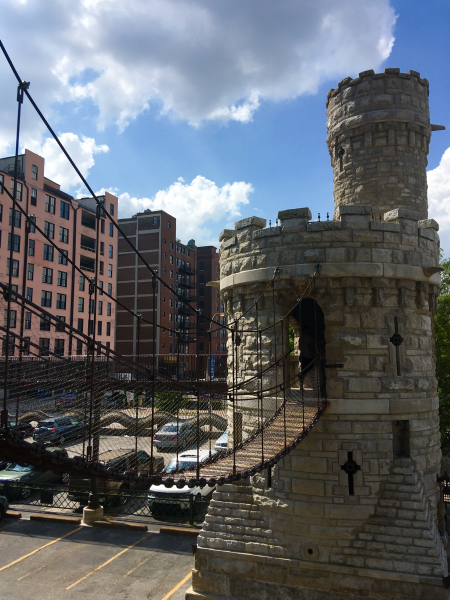
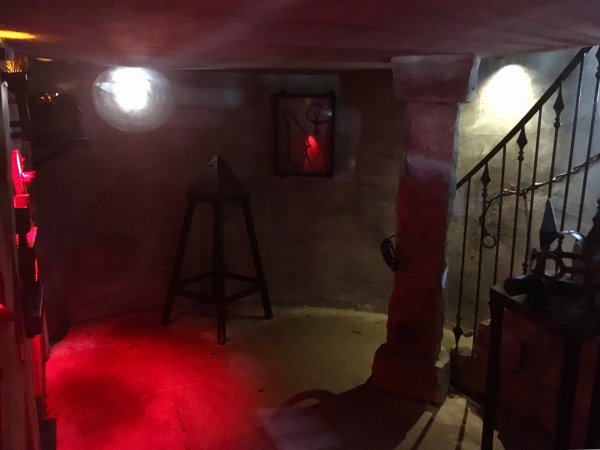
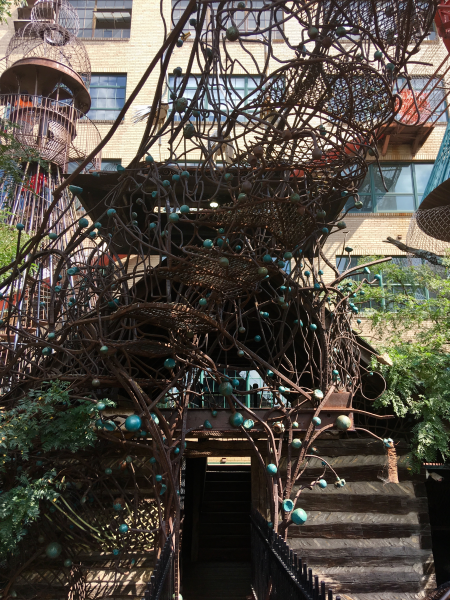
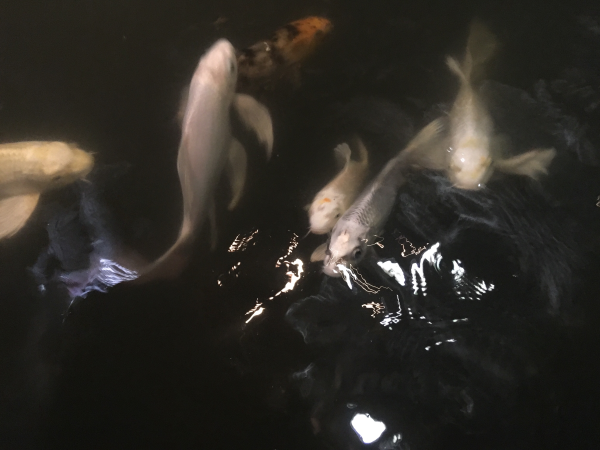
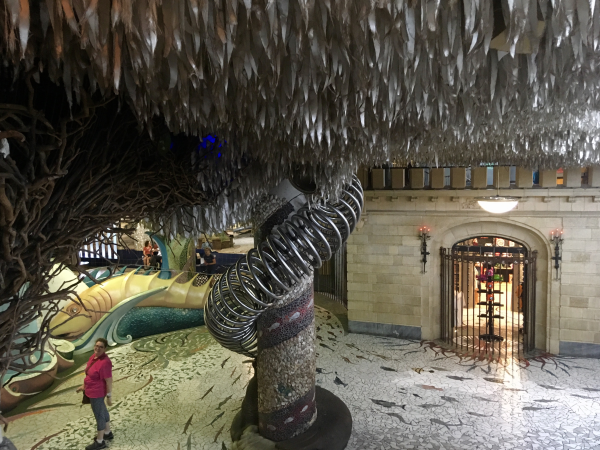
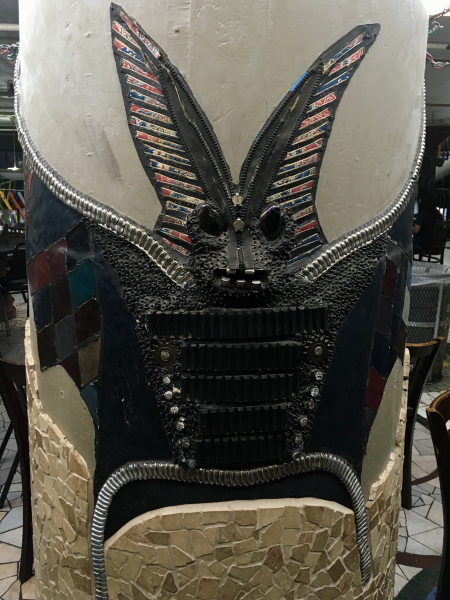
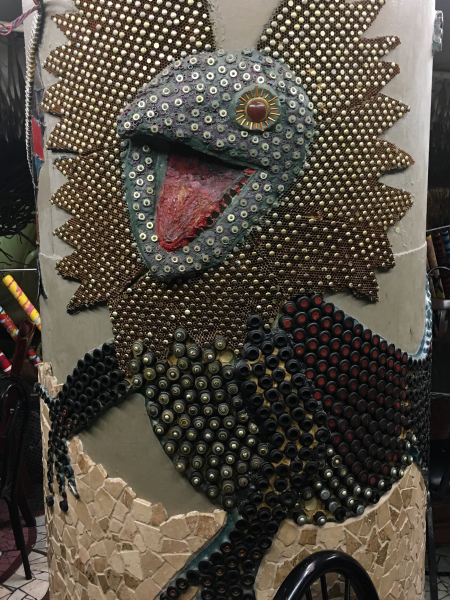
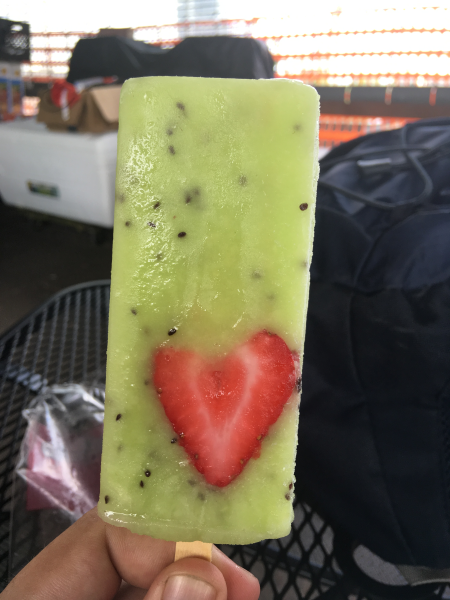
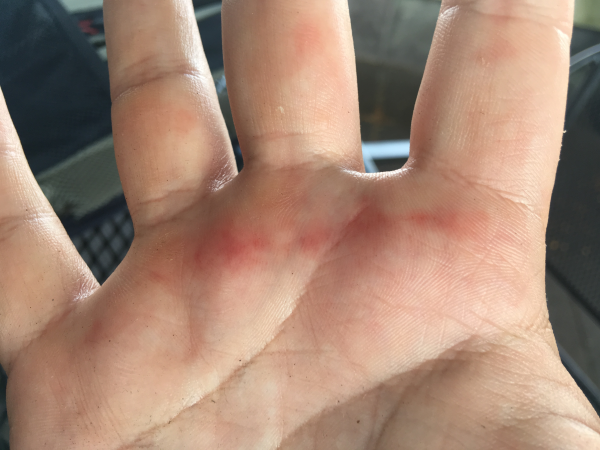
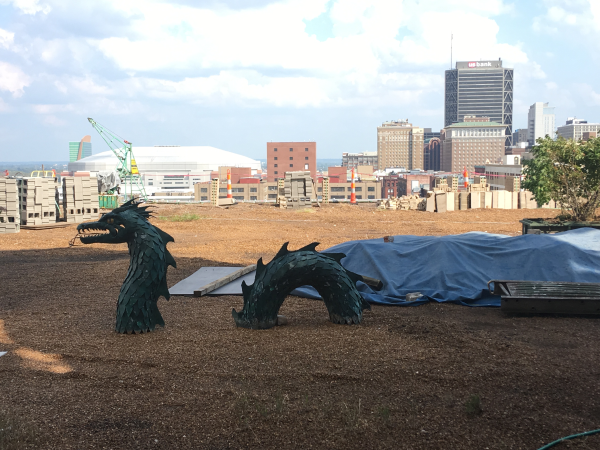

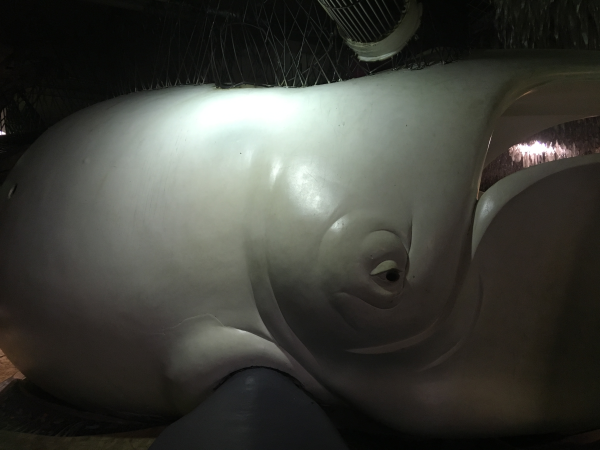
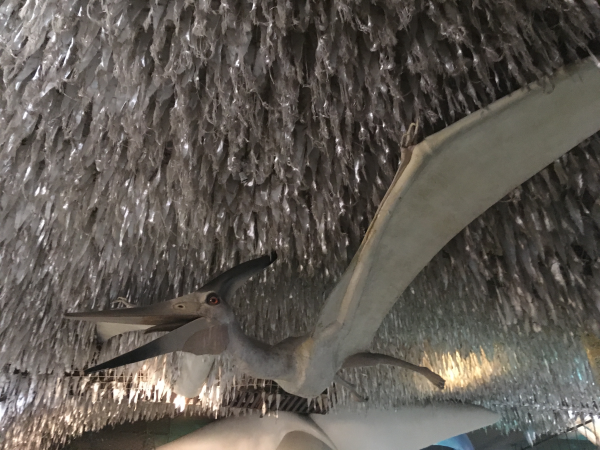
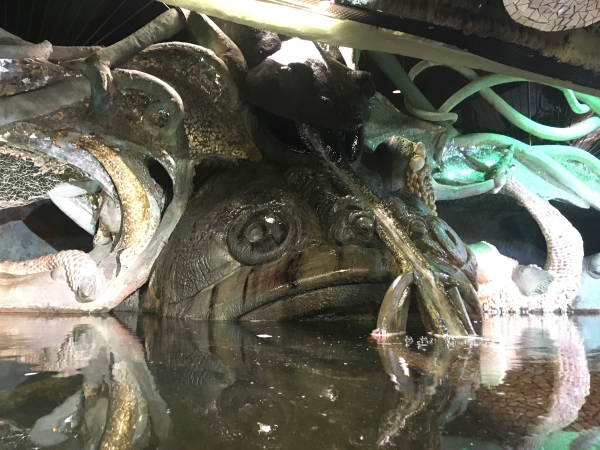
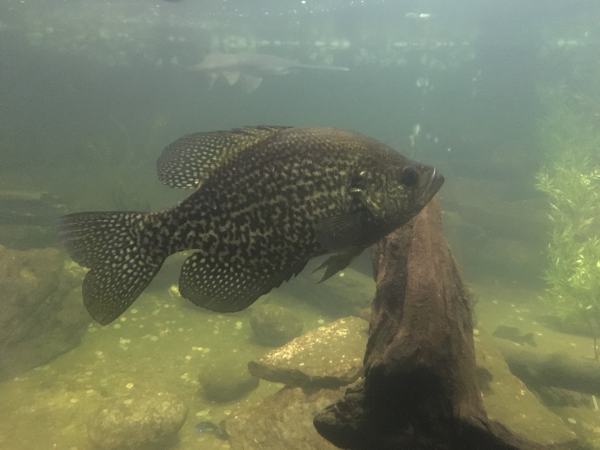
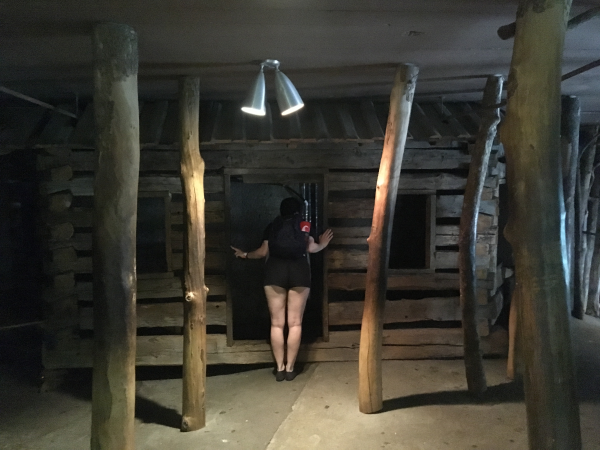

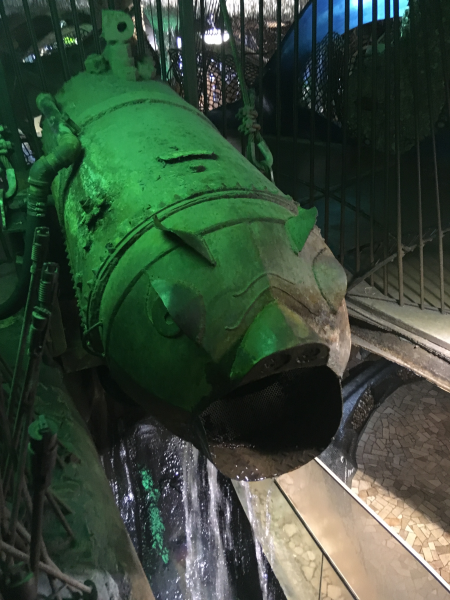
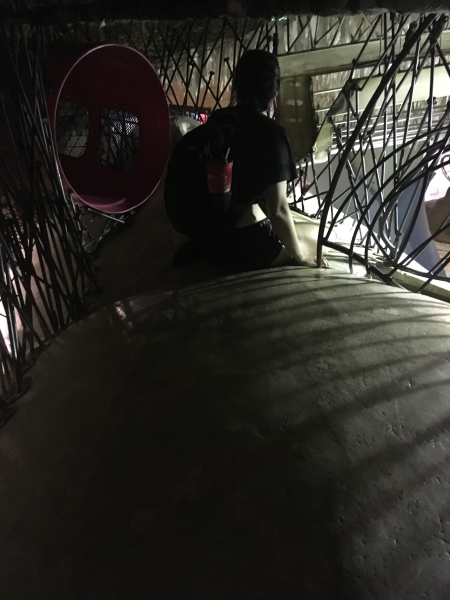
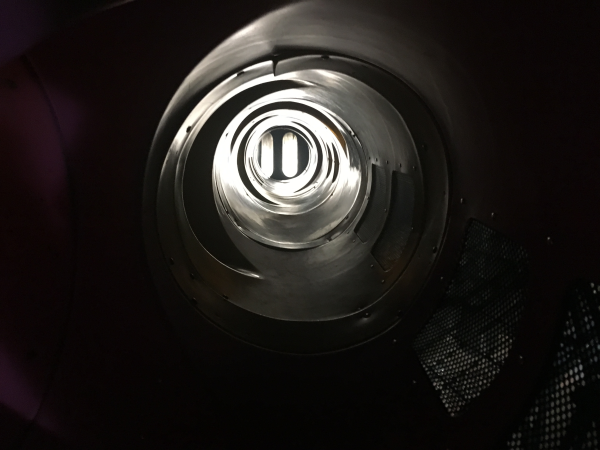
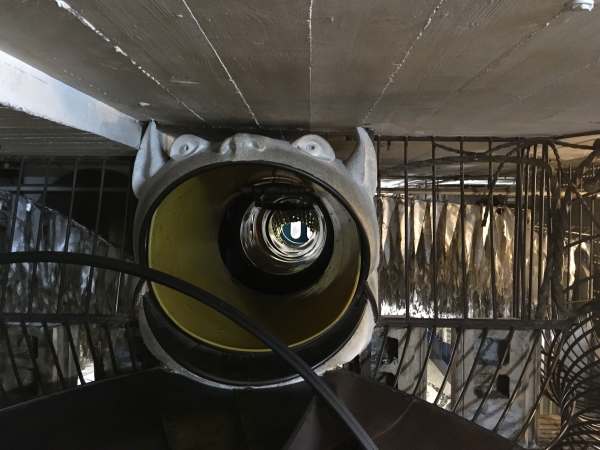
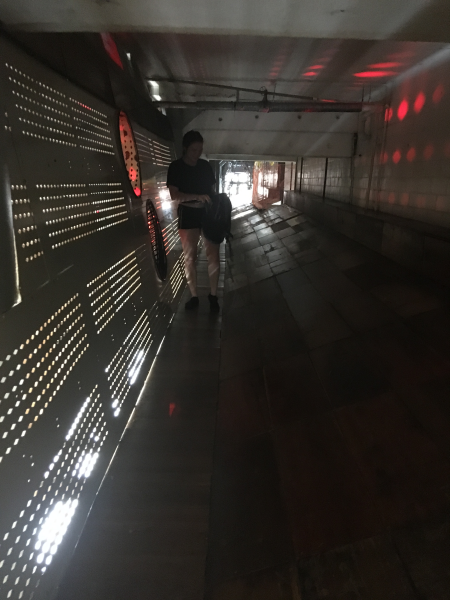
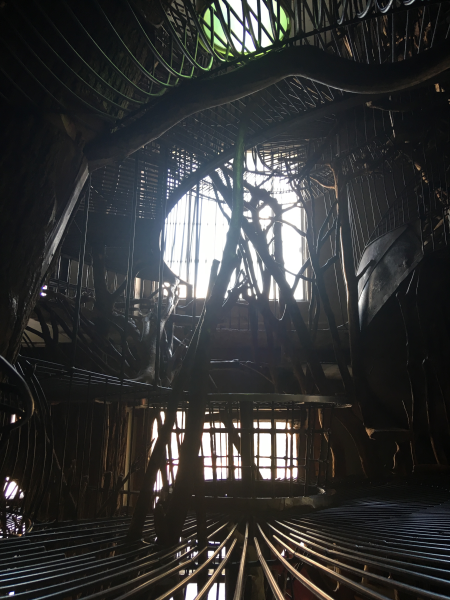
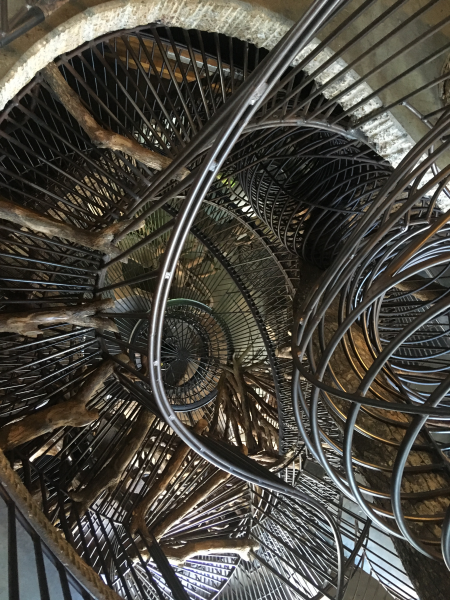
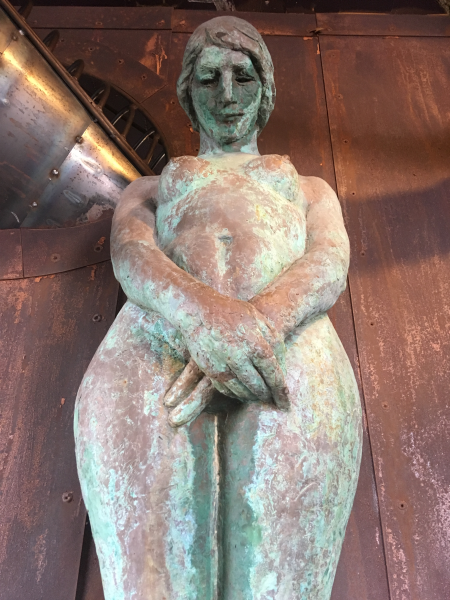
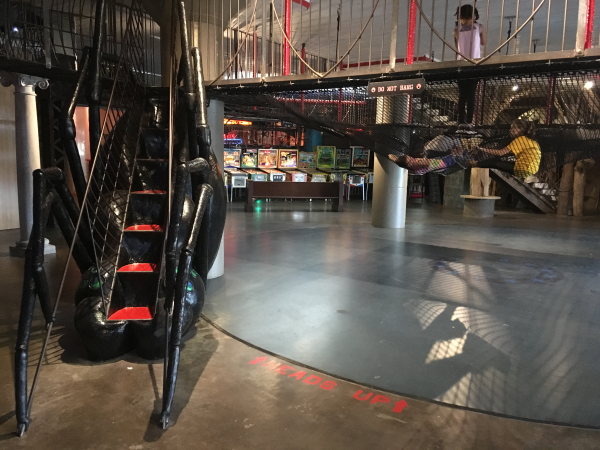
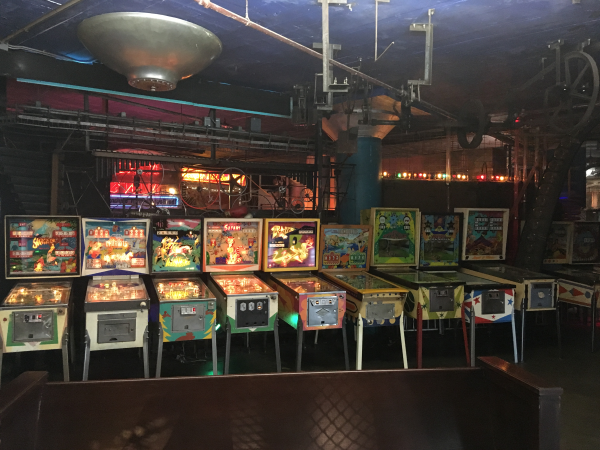
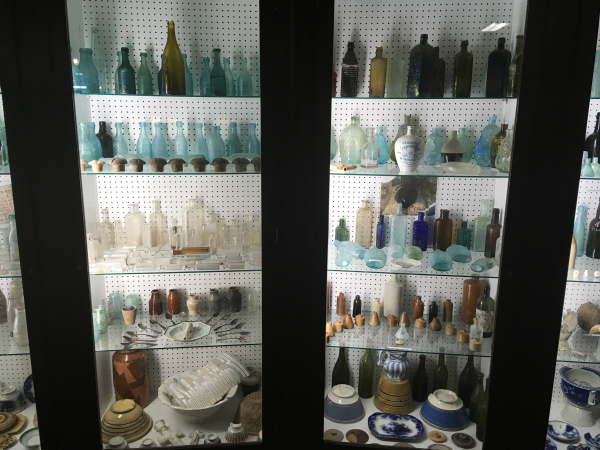
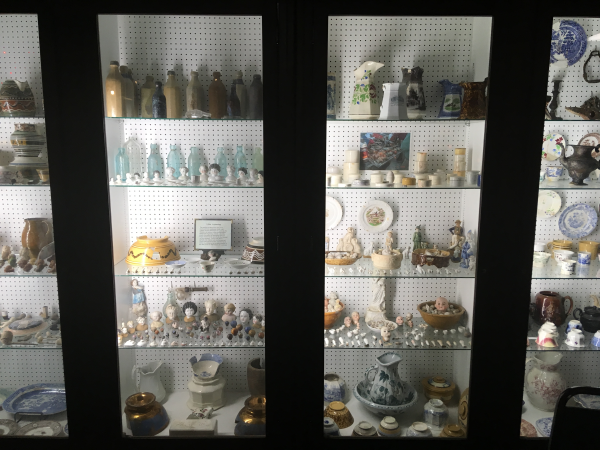
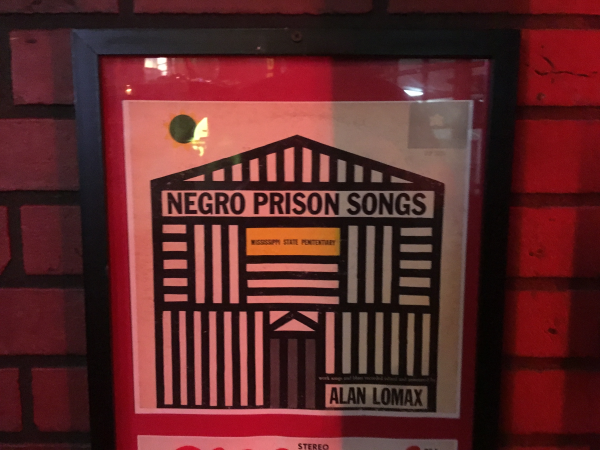
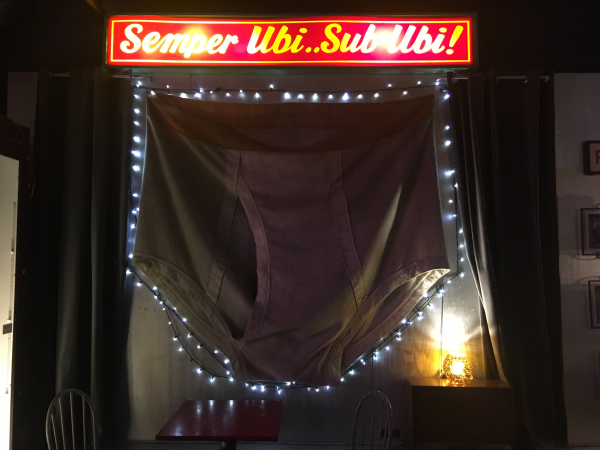
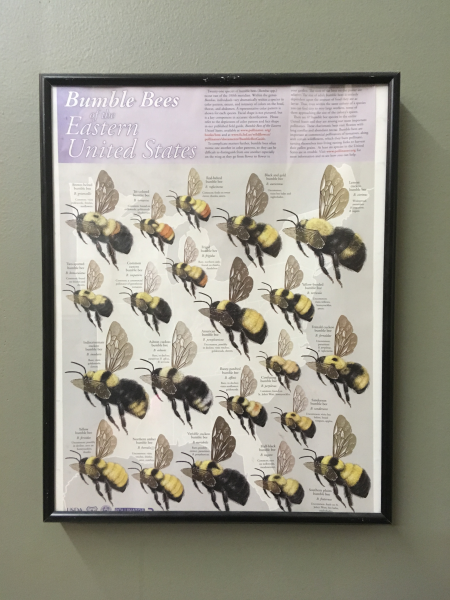
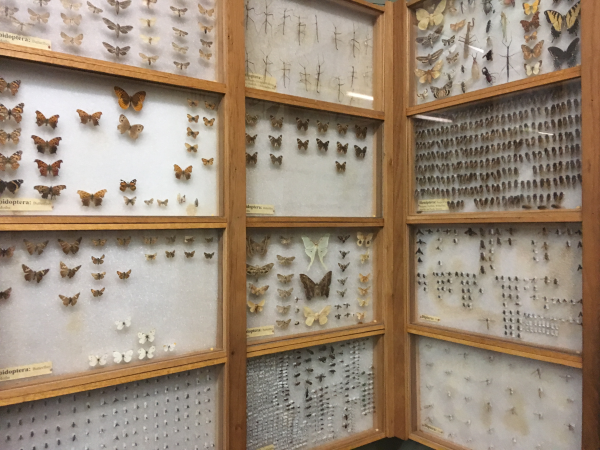
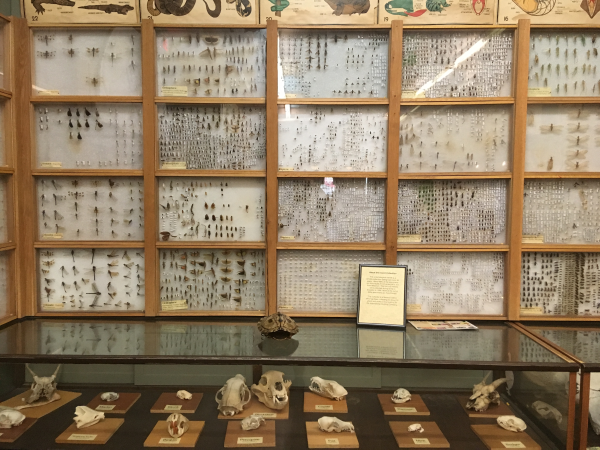
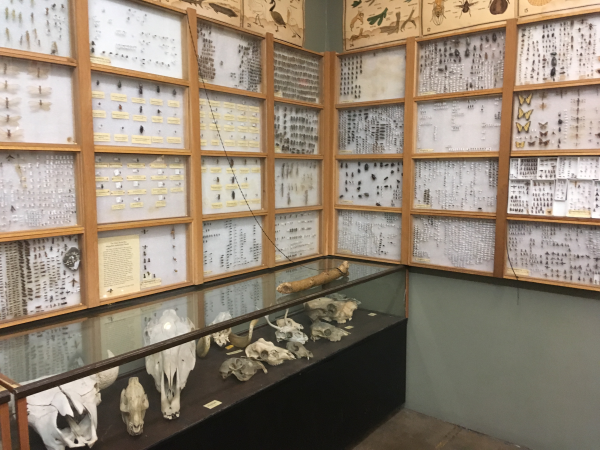
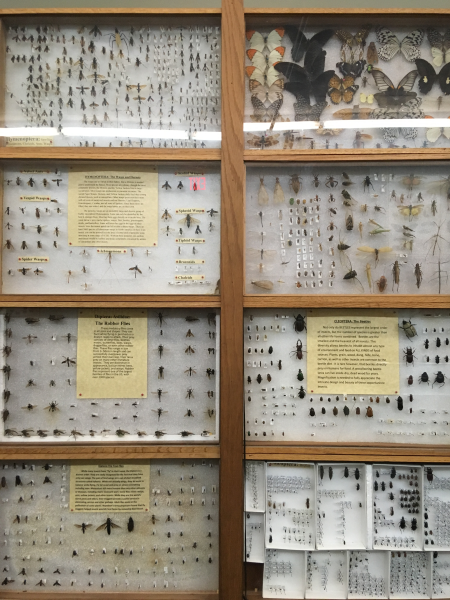
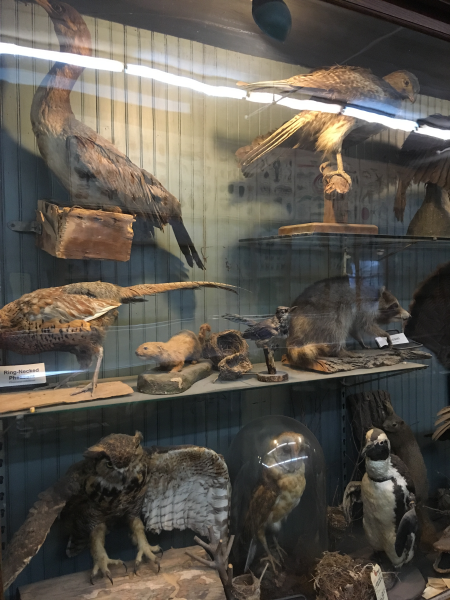
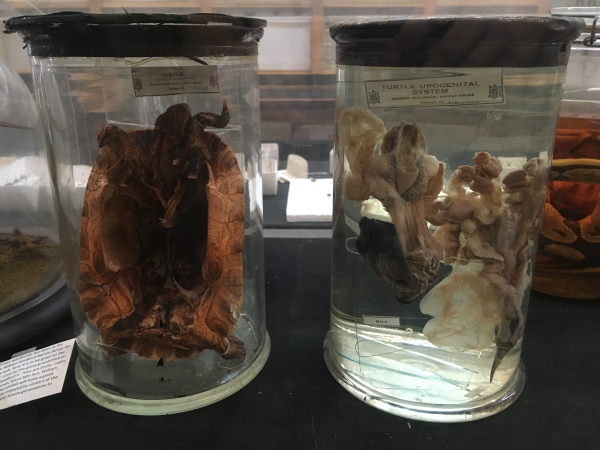
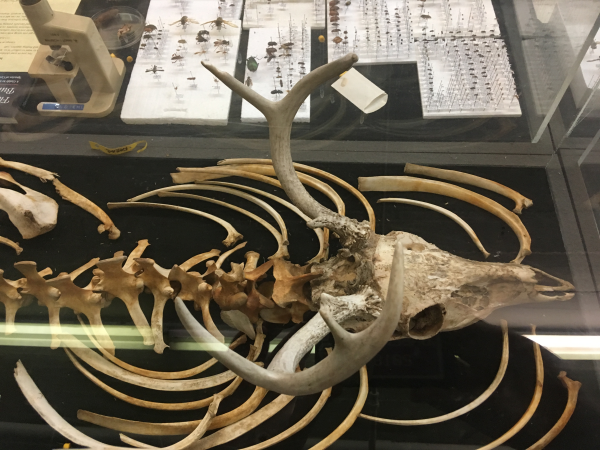
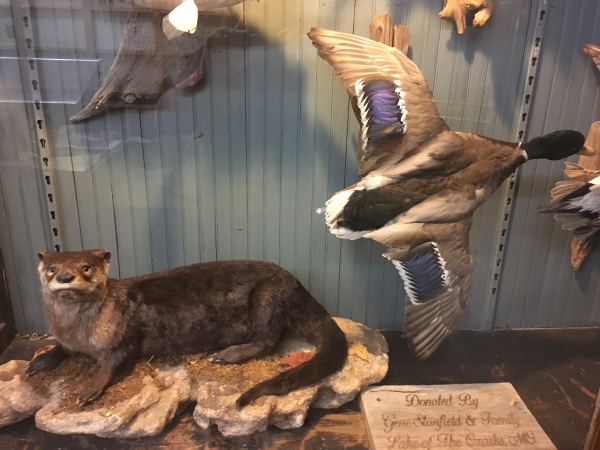
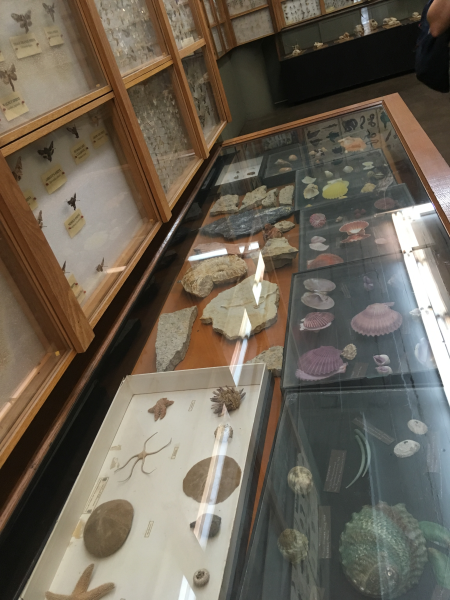
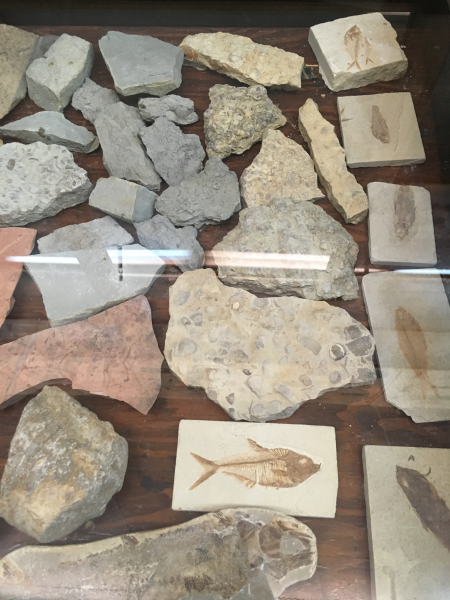

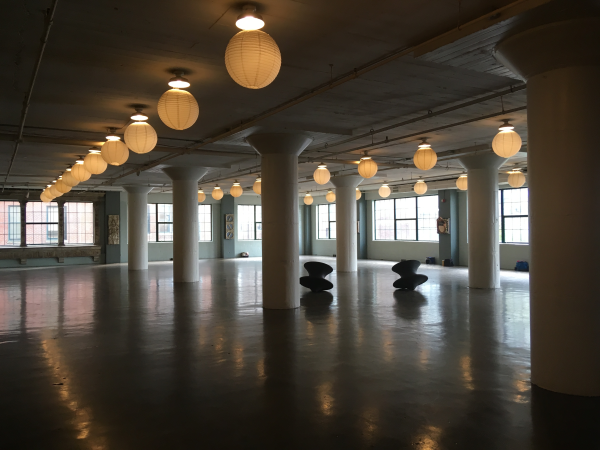
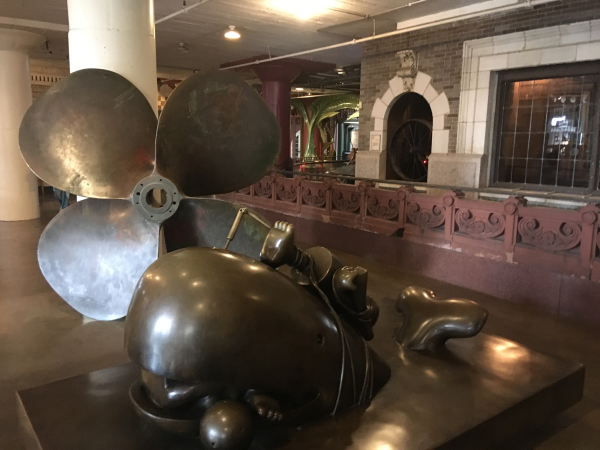
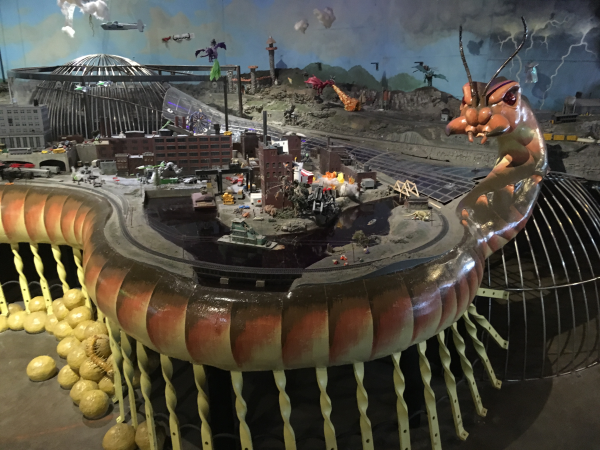
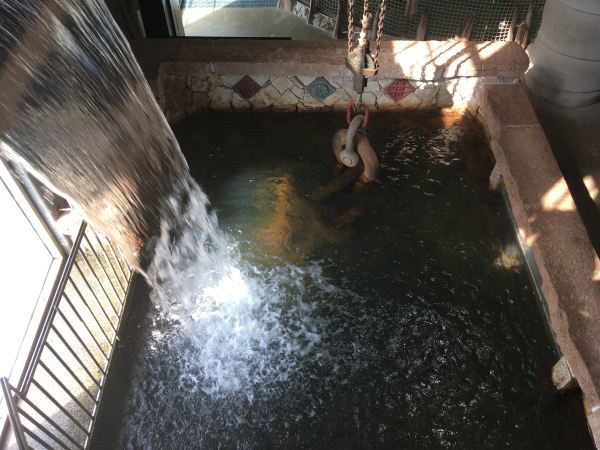

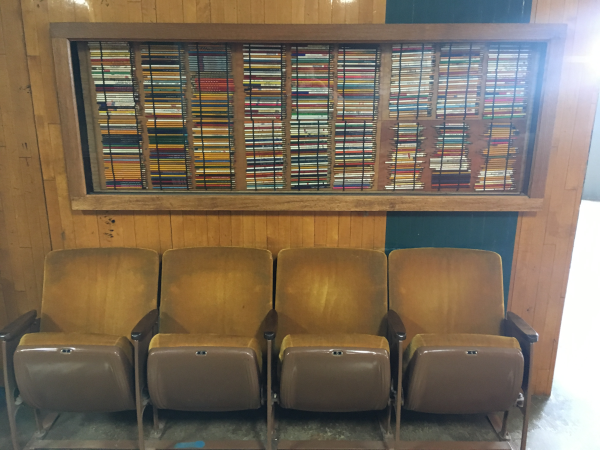
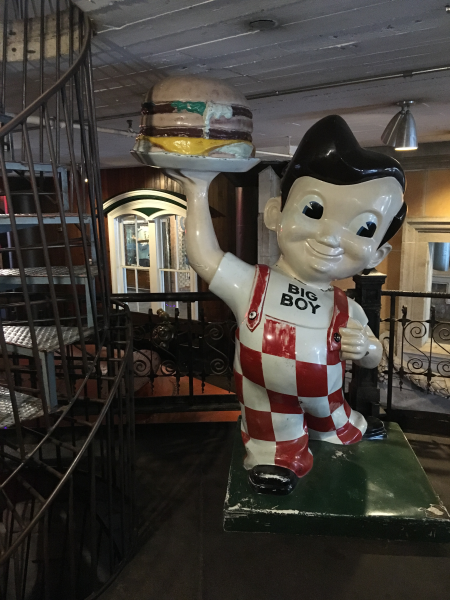


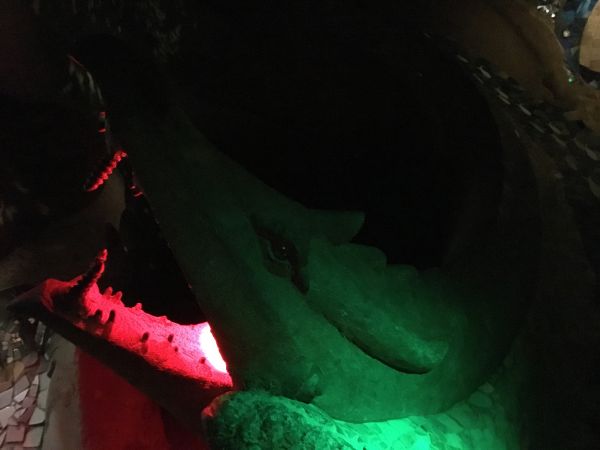
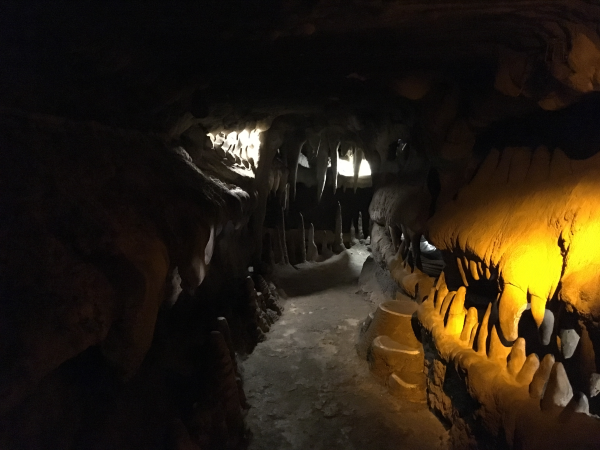
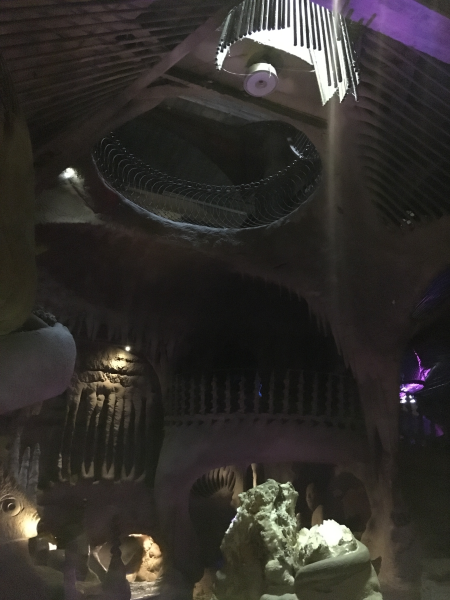
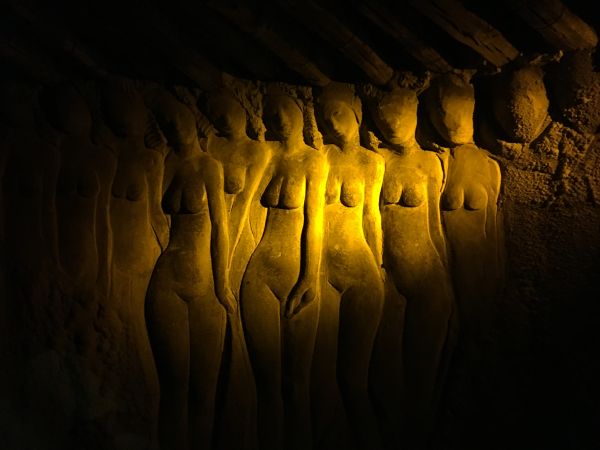
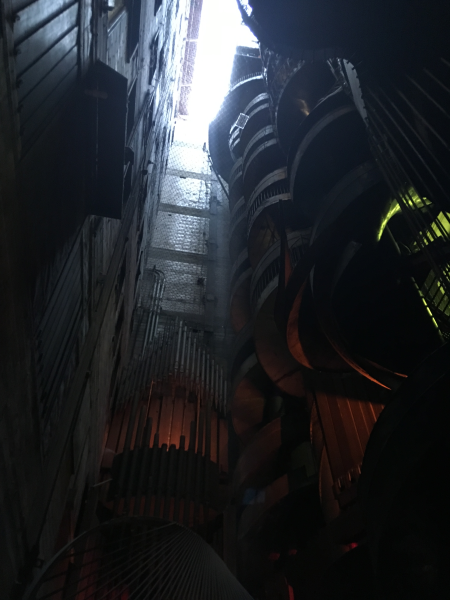
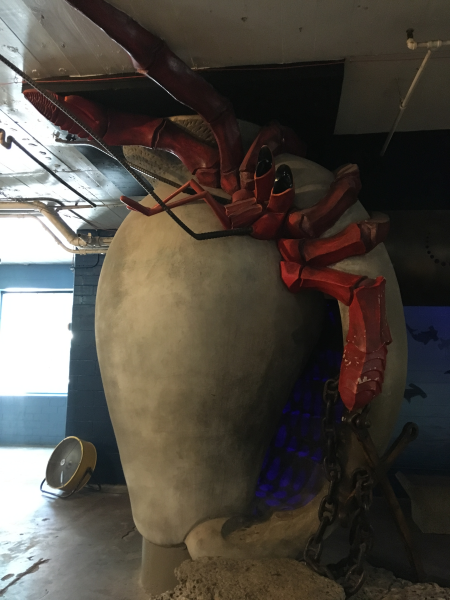
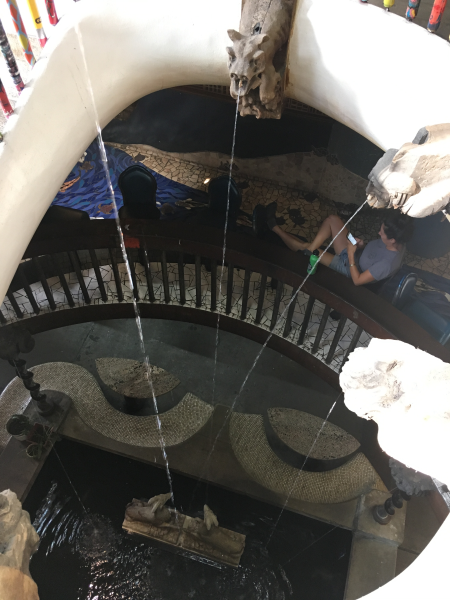
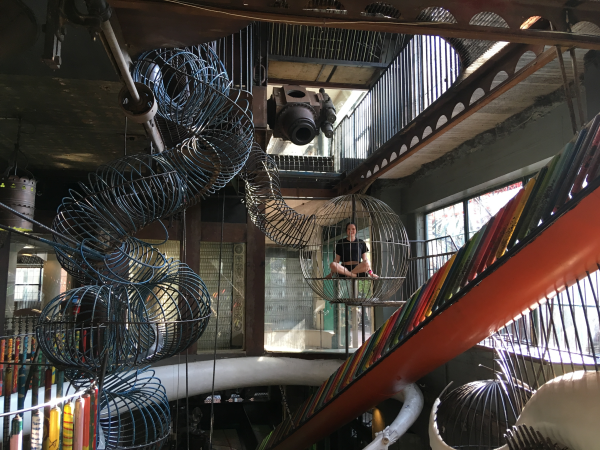
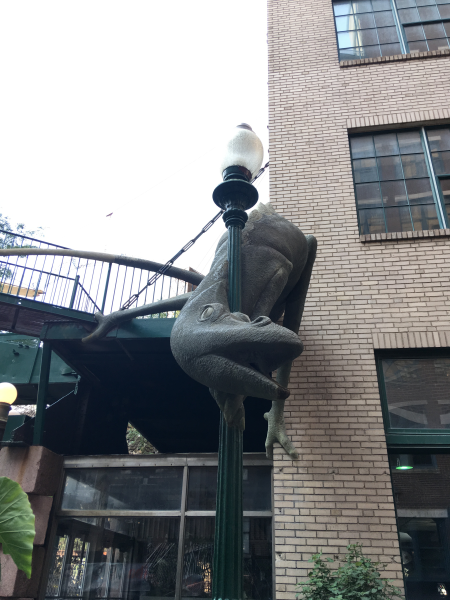
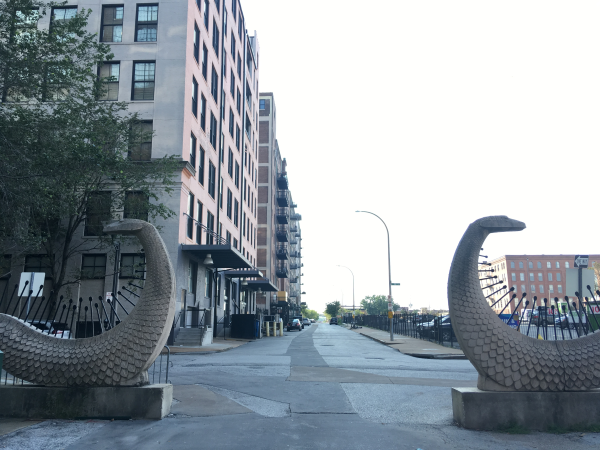
Citymuseum!
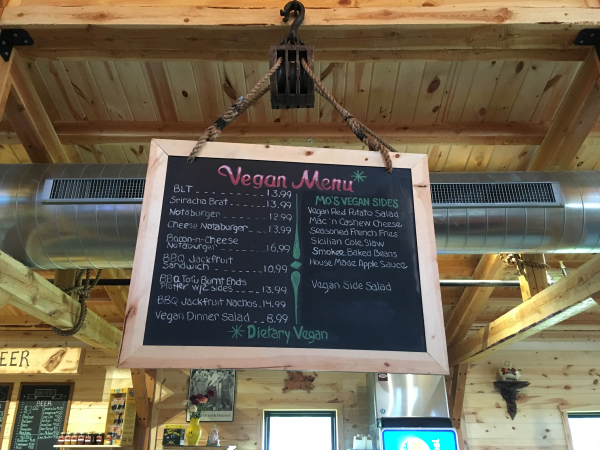
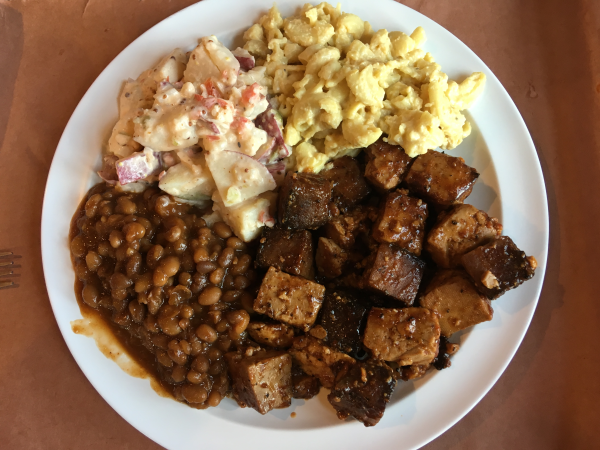
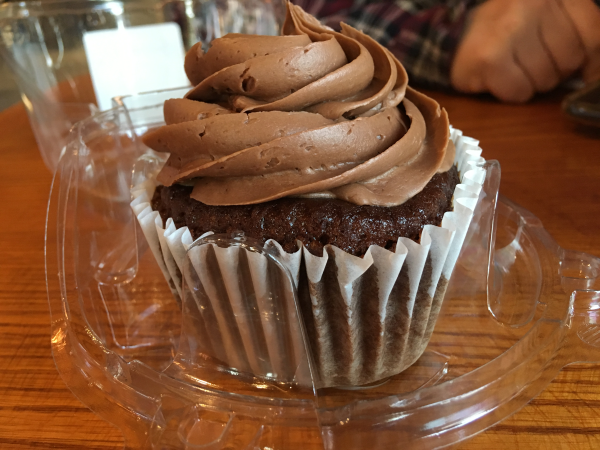
Smokee Mo's!
DAY TWENTY-SEVEN
Thursday, September 12th
Driving across the rest of Missouri toward Kansas City, we made a couple short stops. Central Missouri wasn't the most exciting chunk of state land, as one might assume. Our first was in Chesterfield at the big, beautiful Faust Park, outside of a butterfly zoo. Amidst a stunning garden was a 28-foot-tall stone butterfly, and across from that was a 30-foot-long stone caterpillar. We walked along their little public garden and admired all of the butterflies and bees, but there was no way we were going to pay to go inside a butterfly zoo--and yes, this place was literally an accredited zoo, for butterflies. Nearby under a park pavilion was a large crowd of people celebrating something, cooking out, and day-drinking themselves into oblivion. It was an extremely hot day so far. Also in Chesterfield was this absolutely incredible piece called "The Awakening" by J. Seward Johnson, a 70-foot-long, 4,100-pound giant struggling to unearth himself from a vacant grass field among anonymous office buildings. It was perhaps the coolest sculpture either of us had seen on the trip.
Another short drive from there we stopped just outside of Weldon Springs. There, a 42-acre park of prairie land had been grown around a giant, mountainous mound completely coated in white stones, with one straight stairway path cutting up the middle toward its summit. It was the Weldon Spring Site Remedial Action Project Disposal Cell, or as the Internet has dubbed it, the "Nuclear Waste Adventure Trail". Walking from the car to the stairs, we cut through the tall grass and watched hundreds of crickets hop and fly from one side to the other in a thick wave. Despite its current quiet, calm, and idle state, this site had once been the home of America's largest explosives factory, supplying the American troops during World War II. Keeping with its destructive purposes a decade later during the Cold War, it then became a plant processing uranium ore intended to aid in the building of nuclear bombs for the Manhattan Project. After it had served its purpose, it was abandoned in 1966. It wasn't until the '80s that the EPA found the disaster it had left behind: 1.5 million cubic yards of radiotoxic materials including PCBs, mercury, asbestos, TNT, uranium, radium, and the piles of rubble and waste contaminated by it all--another cesspool cocktail carelessly left behind by the United States government. It was discovered that the surrounding community had also been unknowingly heavily contaminated.
The EPA's solution, of course, was to keep it all right where it was, but contained permanently in a sealed vault impervious to earthquakes and other potential disturbances, designed to last at least a thousand years without anything even being able to grow on or from it. Now visitors could climb to its 75-foot peak and get a panoramic view of five counties, which we obviously did, almost allowing one to forget that they were literally standing on a mountain full of invincible toxic materials that could last billions of years. There was even a bench! Here in America, we turn out superfund sites into tourist stops!
From there, we drove the rest of the way to Columbia. Not far from the nicest waste park, though, the ominous Check Engine suddenly came on. Nothing had happened or changed, and it seemed to be driving normally with the exception of brake pads that whistled and made crunchy grinding noises every time we'd stop. So the first thing we did was bring it to an independent auto shop for a quick checkup, so we could determine if some signals were crossed or if the engine had actually spontaneously self-destructed. The guy was nice and gave us the code reading free of charge. It said something about the gas gauge, which would begin acting up and saying random things almost immediately after we left even though up to that point we hadn't noticed any issue. It would cost $80 for a full diagnostic, which we obviously declined.
Instead, we decided to finally give White Castle a try. $2 Impossible sliders, $1 Dr. Praeger veggie burger sliders, and a big "sack" of fries! We spent the rest of the evening loitering at a Starbucks before retiring to another Walmart Supercenter parking lot. We were relieved it was a lot cooler than St. Louis had been.
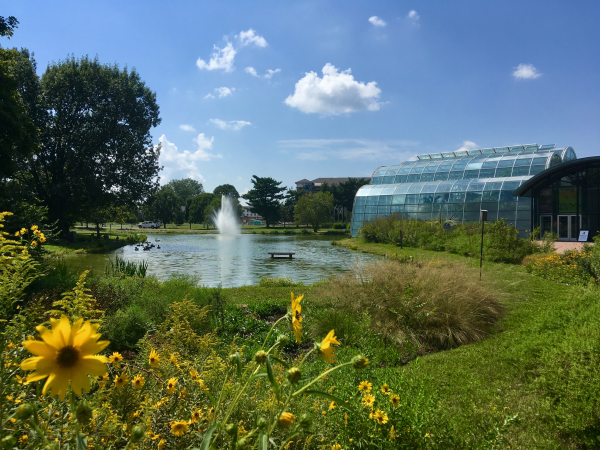
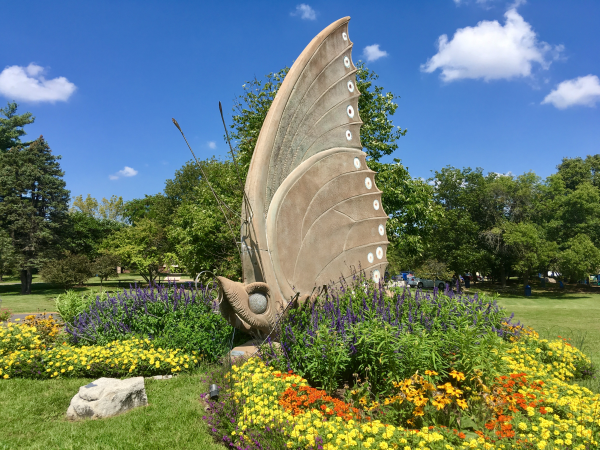
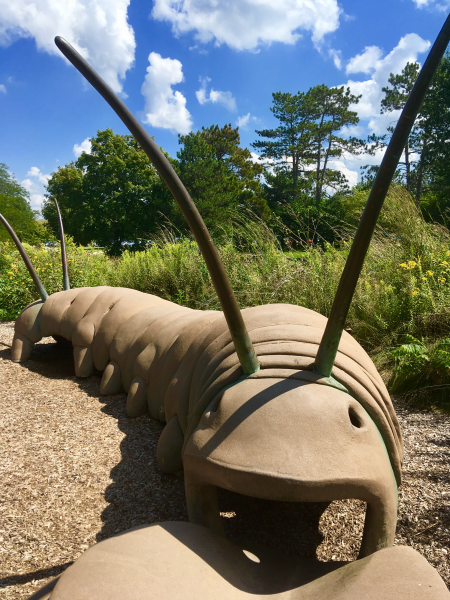
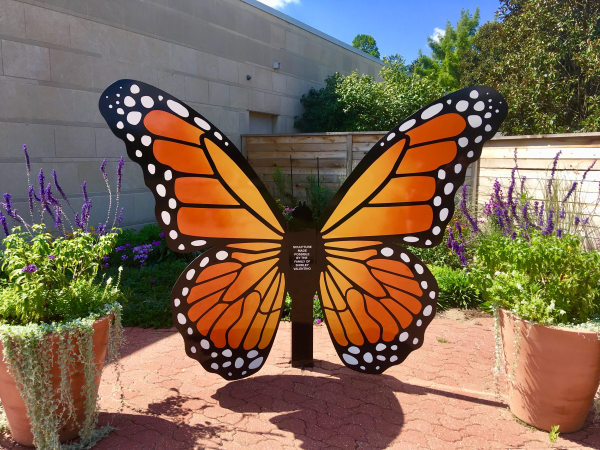
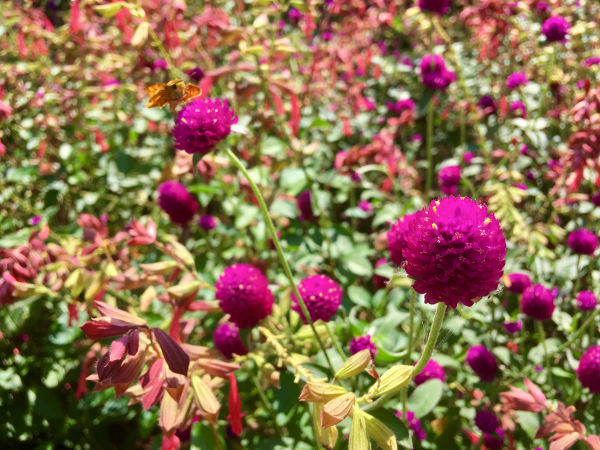
Chesterfield.
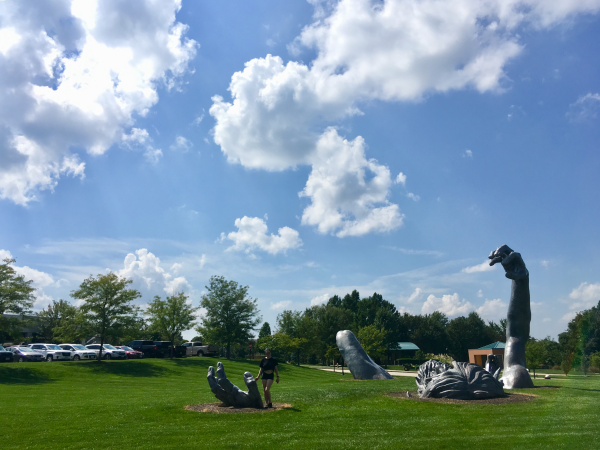
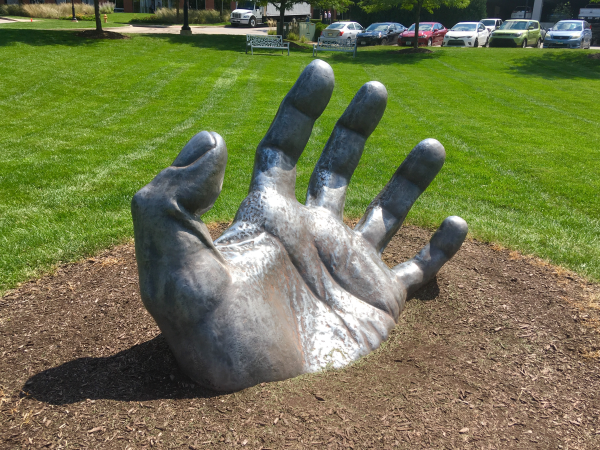
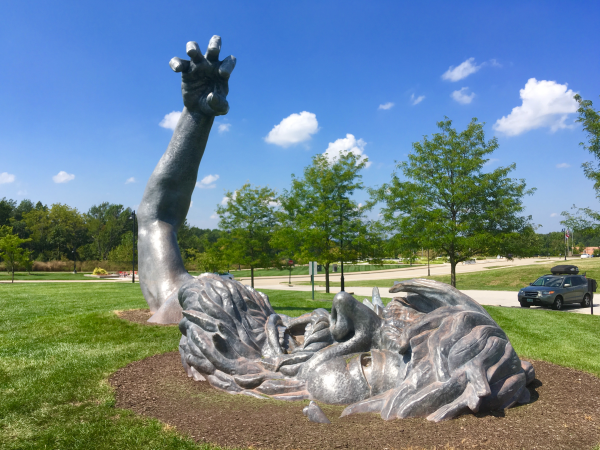

"The Awakening"!
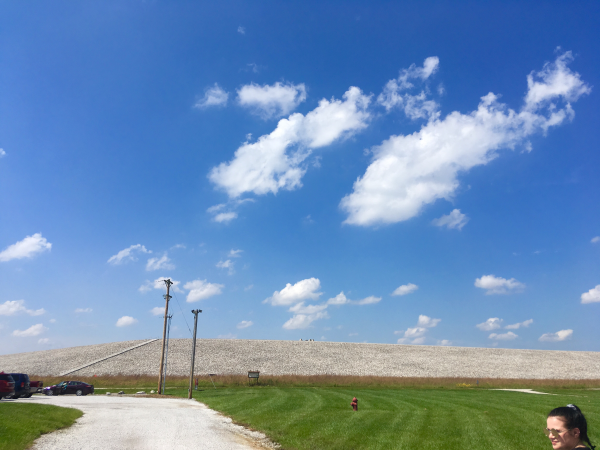
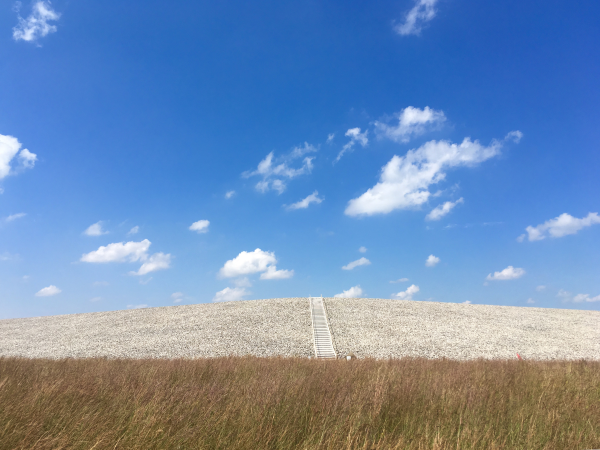
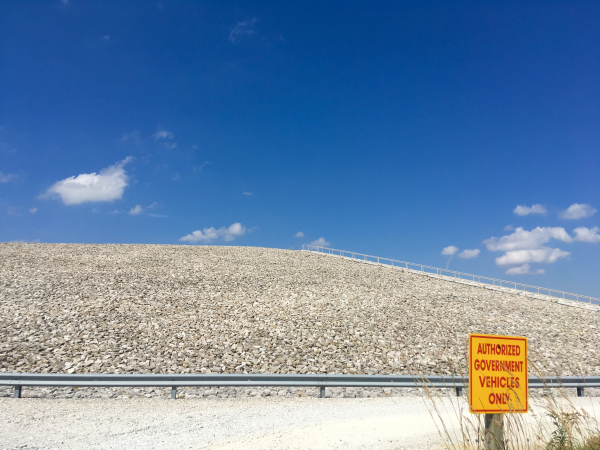
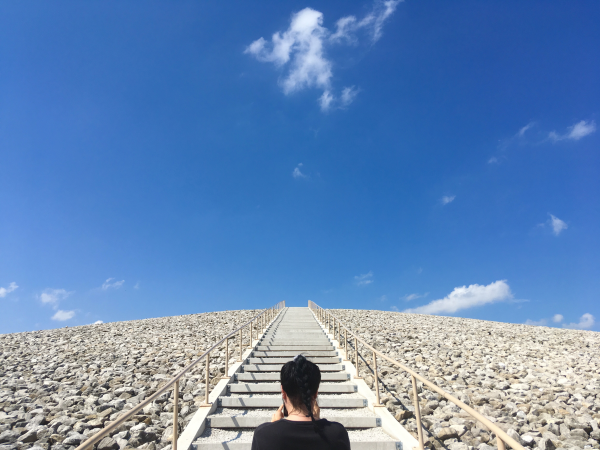
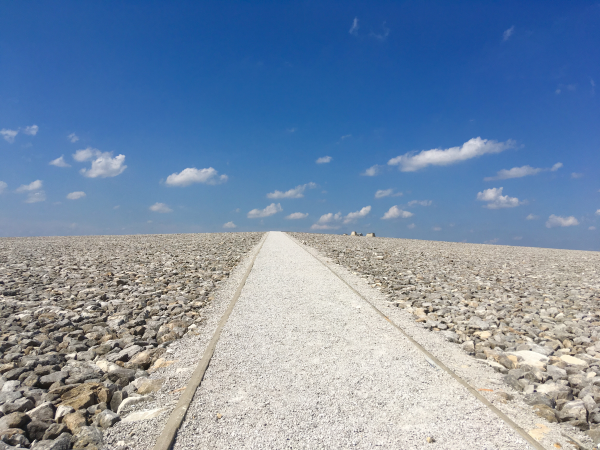
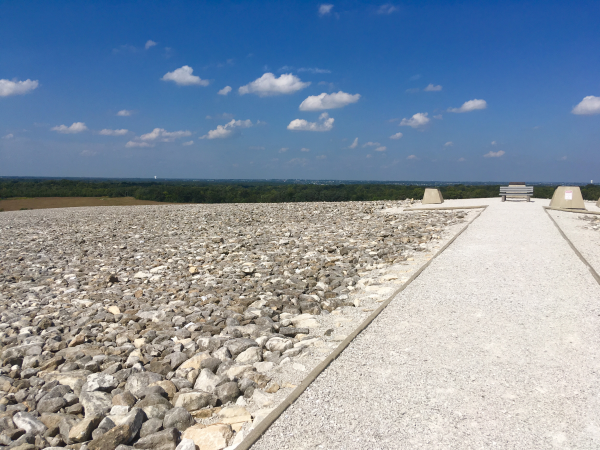
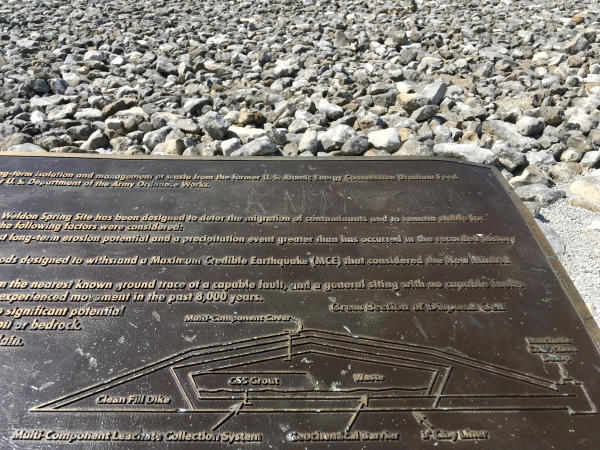
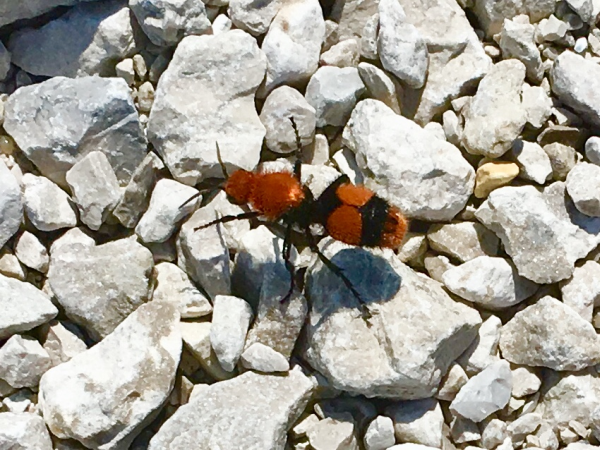
Nuclear Waste Adventure Trail! (Bonus velvet ant we saw!)
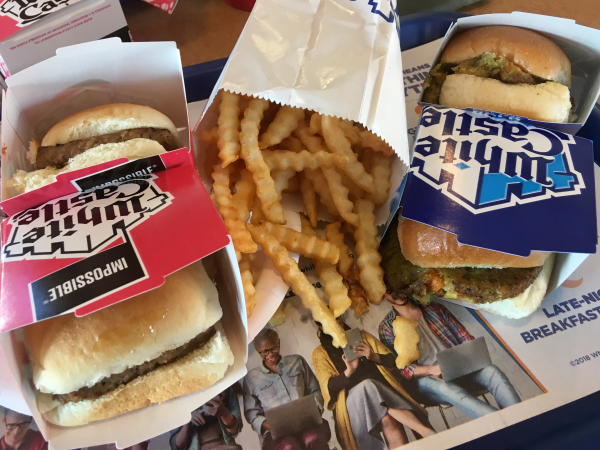
White Castle gone vegan.